
Garmin has just launched the new Venu 3 series, which goes back to having two separate sizes, while adding in a slate of features – some of which are the first time we’ve seen them on a Garmin wearable. This includes things like nap tracking/detection, as well as a new Sleep Coach, and even an evening Daily Summary (sorta like Morning Report, but at night).
The watch also increases features in a number of sports/fitness areas, including expanded sport profiles, sensor support, and new support for wheelchair push tracking and handcycle sport tracking. Plus, the company has pulled in a number of favorite features from their higher-end watches like the Morning Report, Recents menu, and screen-based flashlight.
I’ve been testing both sized watches, with the help of my wife, in our training to see how these stack up. This includes diving into not just the daily wearability and usability, but seeing whether these new features like the Sleep Coach actually work, plus of course heart rate and GPS accuracy testing.
As usual, this watch is a media loaner, and it’ll go back to Garmin shortly. After which, I’ll go out and get my own for any future testing needs. If you found this review useful, you can use the links at the bottom, or consider becoming a DCR Supporter which makes the site ad-free, while also getting access to a mostly weekly video series behind the scenes of the DCR Cave. And of course, it makes you awesome.
With that, let’s get into it.
What’s New:
The Venu 3 is a pretty substantial bump in features over the Venu 2 Plus, though that perspective will vary depending on how sporty you are. Sure, there’s the new headliner Sleep Coach and related features. But the bulk of the new features are actually more sport-focused, and a bit less obvious at first glance. Here’s what’s changed compared to the Venu 2 Plus (which, as a reminder, introduced a speaker/mic that can take calls and has a voice assistant, assuming your phone is within range):
– Changed back to two sizes offered (41mm and 45mm)
– Added Sleep Coach feature, including sleep recommendation factors
– Added Nap detection support (new to Garmin, finally!)
– Added HRV tracking support (at night)
– Added Morning Report feature
– Added Daily Summary report feature (new to Garmin)
– Added Recovery Time (for sports)
– Added Workout Benefit feature (tells you what the benefit of a given workout was)
– Added on-watch interval workout creation (plus existing downloadable structured workout support)
– Added Perceived Exertion ratings/tracking post-workout
– Added power meter support (ANT+ & Bluetooth Smart)
– Added smart trainer support (ANT+ FE-C)
– Added eBike sensor support (ANT+)
– Added support for tracking Wheelchair pushes, as well as wheelchair sport-specific workouts
– Added ‘Recents’ quick switching between widgets
– Added Jetlag Advisor support
– Added more new live watch faces
– Added a number of new sport profiles (openwater swim, handcycle, etc – listed below)
– Added new guided Meditation Activity
– Expanded ‘Shortcuts’ feature
– Added ability to switch between small fonts and larger fonts for text
– Added quick-access Flashlight feature (using screen, not dedicated LED flashlight)
– Added photos in text messages (Android only)
– Revamped user interface a number of different ways
– Changed to new Garmin Elevate V5 optical heart rate sensor
– Switched GPS sensor to multi-GNSS (but not multi-band)
– Removed ECG functionality (sorta, explained below)
– Increased substantially smartwatch battery life to 14 days from 9 days on larger model, and to 10 days on Venu 3S
– Increased slightly GPS battery life from 24 hours to 26 hours for larger model
– Increased screen size from 1.3” to 1.4” (for Venu 3, and 1.2” for the smaller Venu 3S)
– Still two sizes, the Venu 3 at 45mm and the Venu 3S at 41mm
– Price remains the same at $449USD for either model
Regarding the removal of ECG functionality, this piece is a bit ‘complicated’. The sorta-short version here is that when Garmin switched from the existing ELEVATE V4 sensors (with some added ECG-related hardware on the Venu 2 Plus), the new Garmin ELEVATE V5 isn’t yet certified for ECG. Technically speaking, Gamin doesn’t likely have to recertify between these two sensors within the FDA SaMD program, but practically speaking Garmin has always been a very risk-averse company. Thus, as things stand at this moment, the Venu 3 does not have an ECG feature enabled on it. However, this new sensor (same as on the Epix Pro & Fenix 7 Pro) does have the correct required hardware for ECG, if/when Garmin were to enable such a feature. Garmin officially cannot state if or when the unit would ever get such a feature enabled, thus, if you really really really need ECG, then I’d wait until something changes. But as Garmin has stated in the past, they are keenly aware of how important ECG is on smartwatches going forward. And if Garmin were to be doing some revalidation, they’d be able to do so far faster than the first rounds of approvals, as they’d only need to prove it’s “substantially similar” to that product.
In any case, here’s the official battery claims for both models:
Venu 3 (larger size):
Smartwatch mode: Up to 14 days (5 days display always-on)
Battery Saver Smartwatch mode: Up to 26 days
GPS-Only GNSS mode: Up to 26 hours
All-Systems GNSS mode: Up to 20 hours
All-Systems GNSS mode with music: Up to 11 hoursVenu 3S (smaller size):
Smartwatch mode: Up to 10 days (5 days display always-on)
Battery Saver Smartwatch mode: Up to 20 days
GPS-Only GNSS mode: Up to 21 hours
All-Systems GNSS mode: Up to 15 hours
All-Systems GNSS mode with music: Up to 8 hours
Got all that? With that, on to using the watch.
The Basics:

(The above video is a complete user guide to all the features of the watch, effectively walking you through this review, but focused more on tips/tricks/how-to.)
The Garmin Venu 3 and 3S both are identical in terms of daily usage, button layout, and every other aspect except the watch/screen size and battery life. Thus, when I discuss them, I’m referring to both of them. I’ve been testing the larger Venu 3, while my wife has been putting the smaller Venu 3S through its paces in her Ironman training.
Starting off with the basic usage, the unit has three buttons on it, along with the AMOLED display equipped touchscreen. The three buttons are less than many other non-Venu series Garmin watches, which typically feature five buttons. Still, it’s pretty easy to operate the watch using the buttons exclusively during sports, however, for non-sports usage you’ll need to use your fingers for swiping and selecting items like widgets or some menus.
Roughly speaking, in a default configuration, the buttons have the following functions:
Upper right: Quick tap for sports menu, long-hold for quick-access controls menu
Middle: Quick tap for new ‘Recents’ menu, long-hold for Voice Assistant
Lower right: Quick tap acts as ‘back/escape’, long-hold for Settings
You can also customize the ‘swipe right’ action (and the other buttons via Shortcuts), which in my case I configured as the flashlight. Which, is a good time to mention there is a “flashlight”, which uses the display as the light source, and has three white brightness levels, and one red light level. While it’s not quite as bright/directed as Garmin’s Instinct/Epix/Fenix watches that have actual flashlights built into them, it’s perfectly functional for getting around in a strange hotel room in the middle of the night:
My only nit here is that I wish I could access it via a dedicated quick-access button (configured), rather than setting it as the swipe, since I’ve occasionally activated it accidentally.
When it comes to the touchscreen, it works well in dry conditions, and so-so in wet conditions. The nice part is that in wet sport conditions, you can use the dedicated buttons for all your inputs, so you don’t need the touchscreen for much. And while swimming, the touchscreen is disabled. I’ve found that in rainy conditions, it’s mostly just the extra rain droplets on the screen that’s tricky. Versus for just sweaty conditions (where your finger is wet/sweaty, but there’s not a bunch of raindrops on the screen), it generally works pretty well enough. Given summer apparently ended back in July here in Amsterdam, I’ve had plenty of rainy workouts to test this.
In terms of visibility, I’ve had both sunny days, dreary days, and everything in between. While past AMOLED or LED displays (from many companies) have had visibility issues in bright sun, that’s simply not the case for almost all AMOLED displays released in the last year or two. And the same is true of the Venu 3. Zero issues seeing it in bright sunny conditions. Note that taking photos/video of AMOLED displays with a black watch background in the sun is tricky, because all modern cameras will automatically expose/compensate for the rest of the scene, which tends to be very bright. Point being, don’t overthink photos you see out there. If you see a modern AMOLED display (Venu 3, Apple Watch, Samsung Watch, etc…) in the sun that’s hard to read, then it’s just the photographer didn’t do it right. In real life, it’s perfectly visible.
However, there is one minor caveat to that: AMOLED displays, including the Venu 3, basically have three modes:
1) On (with varying brightness levels)
2) Dimmed
3) Off
For everything in this review, I’ve left the brightness levels at default. However, I did set my watch for ‘Always-On’ display, which means that when I raise my wrist, the display goes to normal brightness, and when I put my wrist down, it goes into a ‘dimmed’ state. In the dimmed state, you can still read the numbers, but it can be more difficult in bright sun. Simply twisting your wrist even just a few millimeters instantly resolves that, and for most people it because a completely subconscious motion in short order. Inversely, AMOLED displays are *FAR* easier to read in dark/dim/indoor conditions than historical MIP-based displays, as those require backlight in darker conditions to read.
The Venu 3 default is that it turns off the display when I put my wrist down. As one might expect, that impacts battery life quite a bit, reducing it down from a claimed 14 days to a claimed 5 days. In my testing in always-on configuration, that claimed 5 seems very plausible. I’m getting roughly 4 days of battery life, but with on average ~90 minutes of GPS workouts per day (some days my workouts are 2+ hours, some days just 1 hour). Because GPS time impacts battery life considerably, I feel like this is on par for where things should be. To charge the watch, from roughly 10% to mid-90%’s, is taking me an hour. There’s also the Battey Saver option as well, if you really need to eke out more battery:
Ok, with all that background out of the way, here’s one of the many watch faces. The Venu 3 has a number of stock watch faces, including both ‘live’ watch faces, as well as more static ones. You can pick from these, or a gazillion more on the Garmin Connect IQ app store.
I do feel like there’s a bit more opportunity to expand the stock data fields you can select on the watch faces. Apple has done a better job here in making these more available for complications across all their watches, whereas Garmin seems to want to tie this to a higher-end watch purchase. For example, on the Venu 3, I can’t set one of the watch face data fields to HRV Status or Recovery (despite being offered as a widget), yet I can on higher-end units. Why not?
Next, to access the widgets and much of your health/fitness data, you’ll simply swipe up from the bottom to see the widget glances. These are all customizable, and show small snippets of info, which then can be tapped on to see the full widget details with multiple pages.
For example, I can tap on the steps widget glance to see more info on steps during today, as well as the last few days:
Equally, I can then see all my steps data both on the Garmin Connect smartphone app, as well as the Garmin Connect website. Here’s some of the many different steps-related pages on the app:
All of this is true for the rest of the widgets too, there’s a gazillion more you can download from the app store, which has 3rd party ones as well as Garmin-made ones.
Now many of those widgets depend either directly or indirectly on the optical heart rate sensor on the back. For example, not just 24×7 heart rate tracking, but metrics like breathing rate, stress, blood oxygen level, and sleep. There are further metrics that use portions of it – like recovery time. Here’s that optical heart rate sensor, which is Garmin’s new ELEVATE V5, introduced earlier this summer on the Fenix 7 Pro & Epix Pro watches. The green light will illuminate 24×7 when tracking, and will actually be stronger/brighter in workout modes to enable better accuracy.
This sensor tracks heart rate (BPM) as well as blood oxygen levels. As noted earlier on, it does not yet do ECG, though does have the hardware internals to do so. There’s no official or unofficial guarantee Garmin will enable ECG on it, of course. Likewise, there’s no temperature tracking enabled on it at this time. Garmin hasn’t confirmed if the underlying sensor is capable, but I’m guessing it probably is. Temperature tracking is typically leveraged for women’s menstrual cycle/health tracking, an area that Garmin has historically led (massively) in, but in recent years has fallen behind competitors like Whoop and Oura, and to a lesser extent, Apple.
From a heart rate tracking standpoint, you can see this both on the watch (in the watch face, dedicated widgets, and during workouts), as well as on the app afterwards.
Of course, one of the components that uses the heart rate sensor is sleep tracking. And the Venu 3 expands sleep-related bits with new nap tracking, as well as Sleep Coaching. First up, the normal sleep tracking, which now includes HRV tracking as well. You don’t need to do anything for it to track sleep, simply fall asleep. When you wake up, you’ll see details of your sleep, including the time you fell asleep, woke-up, as well as estimated sleep phase/stages:
In my testing, against both the Apple Watch Series 8 as well as Oura V3 ring and Whoop 4.0 sensors, the times I fell asleep/woke-up were largely correct. It nailed the time I fell asleep always, though all devices were slightly confused one morning I stayed in bed on my phone a bit extra. They marked these both as in-bed as well as asleep. This was actually across all devices, so perhaps I’m an extra-still Instagram time-burner. But normally, all the devices have matched for my sleep tracking well.
Note that I don’t do accuracy validation of the sleep phase/stage detection. The reason is simple: The technology to validate it simply isn’t all that accurate. Using prosumer devices like the Dreem headband will only have about an 80% accuracy rating, in a best-case scenario. And even so-called gold-standard clinical grade tracking isn’t much higher when accounting for scoring differences between the humans that score it. Thus, as a general rule of thumb, I presume all of this is incorrect, even if it’s sometimes correct.
The challenge, of course, is that Garmin (and other companies) lean heavily on the deep/REM sleep portions when calculating various readiness or sleep scores. Thus, it’s sorta a double-edged sword.
In any event, the first new piece here is the nap tracking. This will automatically track naps for you, though you can also somewhat manually force it by using the controls menu to enable sleep mode. But that’s not required. I did the hard work one day of ‘properly testing’ this feature by taking a nap. It got my falling asleep time within 3-5 minutes, but it seemed to think I stayed a bit longer asleep (by about 10 minutes) than I actually did. That same time the Whoop 4.0 strap also overshot by 10 minutes, likely because I was just lying in bed pondering getting up.
Once you’re done with the nap, you’ll see it listed in a few places, including both Body Battery as well as Sleep Coach.
What’s interesting here is that Garmin has long actually given you credit for naps within Body Battery; you just couldn’t quantify it. Now you can, it’ll list exactly how much ‘gains’ you’ve had there. In fact, it’ll list both gains and losses for all sorts of activities throughout your day, from sleep to workouts, and couch sitting to stressful moments. These also show up on the app too.
The other place to see your naps is the new Sleep Coach feature. To begin, Garmin establishes your ‘Personal Baseline’, which is how much sleep it wants you to get normally each night. Then atop that it’ll either show how much additional (or less) sleep you get. My personal baseline is apparently 7-hours and 50-minutes. That seems fine, until you realize that both my wife and fellow reviewer DesFit also all got the exact same 7-hrs and 50-minutes. Which…seems kinda suspect. [Update: Garmin reached out to note that this is because the starting point for the personal baseline initially is your age group, in our case, all 35-49 years olds is 7hrs 50mins, and then each night the other factors will change it on a per nightly basis]
In any case, you can see how much it wants me to sleep extra each night. Garmin says this will never show more than 9 hours, nor less than 7 hours.
However, you can swipe down from the sleep coach to see the ‘factors’ that contribute to that night’s recommendation. This includes any shifts in activity levels, workouts, HRV changes, and even naps accounted for:
Speaking of HRV, the Venu 3 adds in automatic HRV tracking, just like what’s been on Garmin’s higher-end devices over the past 15 months or so. Within the Garmin world, this will automatically track your heart rate variability levels each night while you sleep, but does require 19 nights before it starts giving you the ‘Balanced’ type message below (it will immediately show you the exact values each night however).
Next, once you’ve woken up from all this sleep tracking, you’ll get the new Morning Report. This too was introduced on various other Garmin devices over the past year, and it’s now finally arrived on the Venu series. The Morning Report has quickly become the favored feature of many Garmin users, and is the first thing you’ll see when you wake up. It can show a customized list of different widgets, including your sleep, HRV status, calendar items, weather, and more. You can also shut it off if you don’t want it.
Now equally, there’s also a Daily Summary that’s shown at the end of the day. This is basically a much shorter form of the Morning Report that appears more notification-style, and gives a quick summary of the day. This shows about 2-hours prior to the time you’ve set as your normal bedtime:
This feature seems a little underbaked to me at this point. For example, it shows ‘Workout Day’ every day, cause, ya know…I work out almost every day. And the messages tend to be pretty much the same every day. Albeit, finally, yesterday I had a non-workout day while travelling, and here’s the largely on-point message it showed:
Still, I think this feature has tremendous potential, but it feels like it’s been dumbed down a bit too much upon launch on the Venu series (which is more mainstream). I’d love to see a more data-rich version of this on some of Garmin’s Fenix/Epix & Forerunner units, speaking to things like training load and recovery/etc. Like with Morning Report, you can turn this off if you want as well.
Finally, note that the Venu 3 displays smartphone notifications, as well as calendar notices. As I’ve noted in other reviews, Garmin continues to get better and better with emoji support, to the point where it’s rare I receive an emoji that doesn’t enumerate:
Note that on iOS you’re unable to respond to texts from the watch, due to Apple restrictions. As for calling and such, we’ll talk about that in the next section about calling and related features.
Also, while I didn’t have any timezone-changing trips planned these past few weeks, Garmin has added JetLag Advisor to the Venu 3 series. This allows you to enter your trip details into the Garmin Connect app, and it’ll give you recommendations on how to fight jetlag. As one who has travelled literally millions of miles for work (especially transoceanic), I can attest virtually all of these are solid recommendations. I’ve written about the Jetlag Advisor in other posts, if you want to dig into that here, else, I’ll give it a whirl on the Venu 3 in the coming weeks with some more pond-hopping travel planned.
With that, let’s talk about all the ways this watch can make noise.
Music, Calling, and Payments:
The Venu 3 largely mirrors the features of the Venu 2 Plus when it comes to all things music/calling/payments, so if you’re familiar with that watch already, it’s all same-same here. If not, then the key thing to know is that this is the only Garmin watch series that has a microphone and legit speaker on it (other Garmin watches have a beeper for more basic tones). This mic/speaker allows you to not only take calls if your phone is within range, but also play music on it (no phone required for that).
Starting with the calling portion, since the watch doesn’t have cellular/LTE in it, it does require your phone to be within Bluetooth range (roughly in the room). Essentially, the Venu 3 acts as a Bluetooth speaker/mic, in terms of how your phone views it. Except that you can also initiate calls from it, choose from contacts, and even trigger emergency tracking/calling from it.
To begin, there are two ways to start a call: Via the saved contacts, or via the number pad. Both can be reached from either the controls menu (long upper right button), or the apps menu (short upper right button). If you were to tap the phone dialer option, you’ll see the number pad below. At this point you’ll walk to the extra-taped notepad list on the side of the kitchen phone (the one with the really long cord), look up the number of your BFF, and dial it:
Else, for the rest of us living in 2023 and beyond, we’ll hit the Contacts option, to find the contact we want to dial:
Simply tap that person, and it’ll start dialing, using your watch as the mic/speaker. In fact, you can even see this on the phone, if you look at the audio source, just like an audio headset.
The audio/speaker quality is perfectly functional and clear. While undoubtedly there are clearer mics out there, my iPhone 13 Pro mic has seen a lot of water (salt and fresh) over the last two years, and frankly, the Venu 3 sounds better to others than my phone does these days. There’s a small snippet of this audio in the main review video.
In addition, if you’ve configured specific emergency contacts, you can long-hold the upper right button (really really long-hold), and it’ll start a count-down to calling one of your emergency contacts. You can cancel this if need be.
Next, there’s music. The music functionality here hasn’t really changed in years, except that with the Venu 3 you can use the watch’s speaker to playback the music instead – which I’ve found perfectly functional in a home gym, middle of a field doing core exercises, or other scenario where you don’t need a lot of volume.
The Venu 3 can support both on-watch MP3 files old-school style, as well as streaming services including Spotify, Amazon Music, and Deezer. This means you can load your music on the watch for offline playback without a phone. Said differently: You don’t need to bring your phone with you on a run to listen to music, you can playback to either Bluetooth headphones or the built-in speaker. In my case, I primarily use Spotify, so I got that all set up, which only takes a second to authorize your watch to the Spotify platform. Then you can choose which playlists to download, as well as play.
Playback controls are limited to playing specific playlists you’ve downloaded, but you can pause/skip/change volume/etc.
All this works fine, and long-gone are the days where you’ll have headphone/watch connectivity issues like you may have had 4-5 years ago with dropouts and such. That was sorta the ‘early days’ of watch/headphone transmission/connectivity/power learning. Note that you can save multiple Bluetooth audio devices/headphones if you want, which is kinda handy.
Lastly, in the voice realm, given the speaker/mic, you can trigger your phone’s voice assistant from it. When you long-hold the middle-right button, it’ll start your phone’s voice assistant, and you can speak your request to the watch, which relays it to the phone.
The phone will then respond back on the watch audibly, as well as (at least in the case of iOS) show the answer on your phone’s screen too. This all works just as well as your phone’s assistant normally does. It doesn’t get any smarter (or dumber) with this connectivity, as again, it’s basically just using it as a mic/speaker.
Next, there’s contactless payments. This is using what Garmin calls ‘Garmin Pay’, which means that your bank has to be supported. Thus, not just all Visa cards or such, but rather your specific bank that supports your credit card. In the US, coverage is pretty good, and my US cards are supported without issue. But neither my Dutch nor French cards are supported. It really depends on your exact bank/country, there’s a bit of a list here.
Enrolling a card only takes about a minute, and is quick and easy. In fact, if you’ve already got a Garmin watch with a card loaded, it’s even easier as Garmin semi-recently made it so you can transfer cards to other watches on your account with a quick validation from the app. Once loaded you can access it via the apps menu. Then you’ll enter the passcode in. However, if you’ve been wearing the watch since the last time you entered your passcode, it won’t require it again.
And finally, tap it on the reader to order whatever magical thing it is you want to order:
Quick and simple, and done. Just like any other contactless payments. It’s handy having this on your watch post-run or other activity when you know the area well and know that it has a contactless payment reader. Where I live, that’s effectively 100% of businesses, so it makes it a known-good way – or even a handy backup method in case you forgot your wallet/card/phone.
Sports Usage:
One of the core reasons most people choose a Garmin watch is for the sports tracking capabilities. The other, of course, being the longer battery life. In this section we’re gonna dive into all of the sports tracking features, of which the Venu 3 got a number of expanded features. Many of these features bring it closer than ever to the Forerunner series, albeit there’s still notable differences between the like-priced Forerunner 265, which has much more depth around training load and recovery metrics (and things like triathlon mode, running track mode, running power, and Training Readiness scores).
Still, the Venu 3 not only expanded the number of sport profiles, but also the data recorded in those profiles – including new support for power meters and recovery time metrics.
To get started, you’ll tap the upper right button, which opens up the newly redesigned (and combined) Sports/Apps menu. Essentially the left side of the menu is sport modes, and the right side is dedicated Apps (Garmin or 3rd party). This is notable because previously you had sorta-random apps in the sports listing (like Health Snapshot or 3rd party non-sports apps). Now, there’s some clear separation. In any case, here’s your list of sports:
You can customize and sort which ones you want to see there, including defining your favorite ones.
Here’s the full list of sports modes on the Venu 3 as of this moment. Garmin sport modes generally have very specific data metrics recorded with each profile, whereas most other companies tend to use it mostly just for slightly different calorie burn. For example, in downhill skiing, you’ll get descent, run tracking, and more. In pool swimming, you’ll get stroke rate and related, and so on. The full list:
Walk, Run, Bike, Bike Indoor, Strength, Cardio, Meditation, Bouldering, Breathwork, Climb Indoor, Disc Golf, Elliptical, eBike, Floor Climb, Gaming, Golf, Handcycling, Handcycling Indoor, HIIT, Hike, Indoor Track, Navigate, Open Water Swim, Padel, Pickleball, Pilates, Pool Swim, Row, Row Indoor, Ski, Snowboard, Snowshoe, Stair Stepper, SUP, Tennis, Treadmill, Walk Indoor, XC Classic Ski, Yoga
Compared to the Venu 2 Plus, these were the new Venu 3 additions:
Meditation, eBike, Handcycling, Handcycling Indoor, Open Water Swim, Gaming* (this one is also being added to the Venu 2 Plus currently)
Over time we sometimes see Garmin add new sports profiles in firmware updates (especially to the Forerunner/Fenix/Epix watches). However, the Venu has a pretty slim history of that happening, which is fairly disappointing. The most recent update for the Fenix 7/Epix saw 30+ new sport profiles added, and the also-$449 Forerunner 265 saw a dozen+ new sport profiles added.
When it comes to sensors, the biggest change on the Venu 3 is the addition of cycling power meter support (ANT+ & Bluetooth Smart). This will record your power meter data, and allows you to select Current Power, Average Power (total), and Power Zones. However, that does miss a ton of other cycling power data fields found on other Garmin watches (cheaper ones), and also won’t record any of the Garmin Vector/Rally advanced metrics. In any case, here’s the full list of external sensor types supported:
Headphones (Bluetooth audio devices), Heart Rate Sensors, Speed/Cadence, eBike, Foot Pod, Tempe (Temperature), ANT+ Cycling Lights, Cycling Power Meters (ANT+ & Bluetooth Smart), Cycling Smart Trainers (ANT+), Cycling Radar (ANT+), Golf Club sensors
You can save sensors and rename them, as well as save multiple of the same sensor type. For example, if you had multiple bikes, or perhaps different heart rate straps.
Note that while Garmin supports all of their chest straps, the Venu 3 does not support Running Dynamics data from it, nor wrist-based Running Dynamics or Running Power. Again, another odd omission, given the addition of cycling power support (and that other cheaper Garmin watches have it). I know I keep harping on these gaps, but Garmin made a lot of progress over the last year aligning the Forerunner and Instinct watches at the mid-priced range, so that they were essentially like-featured when it came to software features. Thus you were mostly deciding on the look of the watch. I was hoping we’d see the same happen here on Venu, but alas, not.
The Venu 3 does support broadcasting of your heart rate on both ANT+ and Bluetooth, which means you can connect it up to platforms like Peloton or Zwift quickly and easily:
For the Peloton Bike/Bike+/Tread/Tread+ hardware, it actually supports ANT+ heart rate sensors too, so you’ll see it there listed by both. Whereas if on an Apple/etc device that only supports Bluetooth smart (such Zwift on Apple TV), you’ll just see the Bluetooth connection.
So, heading back to the sport modes, I’ll show you how a run works, though functionally they’re all pretty similar. Once you open up the run profile, you’ll see it’ll start looking for GPS and then locking your heart rate as well. If you have any other sensors, it’ll go and connect to those as well.
You can also swipe up to get into some of the structured workout options. The Venu 3 supports both pre-planned custom/structured workouts, as well as the ability to create an on-demand interval workout. Garmin also pre-loads a handful of running interval workouts too in there, but you can go to Garmin Connect to find tons more, including full training plans. Likewise, if using a training plan, it’ll show you the calendar as well:
Here you can see in the Garmin Connect app just a handful of the different workouts and plans they have. There’s triathlon, running, and cycling plans, as well as nearly 100 different structured workouts for the gym.
Down in those same pre-run settings, you can modify the data field configuration on the Venu 3. This is true for any sport profile, and the Venu 3 allows for three fully custom pages (each with up to four data fields each), as well as a heart rate zone gauge page. This means you can configure your running pages differently than your cycling or yoga pages.
Further, you can also configure alerts for heart rate, run/walk, pace, time, distance, cadence, and calories. Which is different than auto-lap, which can be configured for a distance of your choosing, all the way down to 0.10 miles to 99.99 miles. Most of us probably just leave it on 1mi/1km. Or, simply turn it off altogether and manual lap instead (or, do both). There’s also auto-pause and auto-scroll (which automatically iterates through your data pages).
You can do all of these settings on the phone as well. Also, you can enable LiveTrack to automatically notify a predefined list of recipients every time you start a workout, which sends them an e-mailed link with your exact position and historical data for that workout (including heart rate/pace/speed/etc.). Note that the Venu series doesn’t support courses, so it doesn’t send them that.
With everything finally set (normally you’d just tap to start the workout, but obviously I wanted to show how all this works), you’ll simply tap the upper right button again to start. You’ll see your workout data displayed constantly and updated every second. All of which is recorded for later access. To iterate through the pages, simply swipe up/down.
As I noted earlier in the ‘Basics’ section, I’ve had no issues with screen visibility in sunny or dark conditions, nor any issues during workouts with sweat. Likewise, no issues using it for an openwater swim either:
Once you’ve completed the workout you’ll get a slate of summary pages, showing totals, the track itself, as well as various lap and average stats:
Note in particular in that gallery is both the new ‘Training Benefit’ tidbit that tells you what value your workout was, as well as the Recovery Time metric. Both new to the Venu series.
In addition, there’s far more information on Garmin Connect (the smartphone app, or website), where you can dive into even more data.
Now briefly touching on some of the other sport types, there are numerous strength training workouts in the watch as well. These will also show the exact muscle groups that are being targeted, as well as the movements required for each move in the workout. For example, if I select from one of the included on-watch workouts, you’ll see there’s a few different options – and you can see exactly what it’s focusing on:
And then, for each movement in the workout, it’ll list exactly what’s coming up, and how to do it. It’ll also show the exact number of reps that you need to do. This same animated format is also used for yoga poses as well.
None of this is new for the Venu 3, as it’s been around for years on Garmin watches – especially within the Venu/Vivoactive lineup. Additionally, once a strength workout is done involving weights, it’ll allow you to specify exactly how much weight was used during the sets.
Finally, in addition to all of this data being sent up to Garmin Connect and visible there, it’s also sent to any 3rd party apps that you’ve configured – such as Strava, TrainingPeaks, and the like. That typically happens just a few seconds after hitting save – it’s pretty quick and seamless.
Accuracy (GPS & Heart Rate):
In this section we’ll evaluate the accuracy of both the GPS/GNSS tracks, as well as the optical heart rate sensor. In other tests of this specific optical heart rate sensor (Garmin ELEVATE V5), it’s done very well, but of course each watch can be different in terms of how it’s implemented. Meanwhile, the GNSS/GPS isn’t unique either, though as noted earlier on, it lacks multiband found in some of Garmin’s other watches at the same price point. Typically multiband (aka dual-frequency GNSS) delivers better results. Whereas Garmin has “multi-GNSS”, which is yet another GPS term to keep track of, but not at all the same as multi-band/dual-band/dual-frequency (all the same thing).
However, as I’ve said many times since dual-frequency GPS started appearing in watches: I don’t care how a company gets accurate results, as long as they do. As we’ve seen with both Polar and COROS’s dual-frequency/multiband implementations, those actually perform worse than Garmin’s recent not-multiband implementations. Likely because Garmin is seemingly using the exact same chipset on both, but only seemingly has the required dual-frequency antenna pieces on some of the units. In fact, we’ll see that again here too – comparing them head to head.
For all these tests, I’ve got multiple other recording devices and sensors. As always, no two watches are on the same wrist, so as to not interfere with each other from a heart rate standpoint. Extra watches are either worn elsewhere on the body (like the hand if for GPS, but not HR), or on a bike (handlebars). Those watches not on the wrist are collecting heart rate data from connected HR sensors/straps.
First up, we’ll start with a relatively stable 15KM/10mi run, in relatively easy farm-road conditions, with only a few tree-lined sections. Looking at the heart rate, we can see all the units did perfectly fine here, including the Venu 3. No reason to dig into this more deeply.
So instead, let’s look at the GPS tracks. Remember, the Venu 3 doesn’t have multi-band GPS (nor does the Apple Watch Series 8, just the Ultra), whereas below both the Forerunner 955 and COROS APEX 2 Pro do have multiband. At a high-level it’s hard to see the differences:
But as you zoom in on a large bridge underpass section, you can see the Venu 3 nails it, but the multi-band equipped COROS APEX 2 Pro meanders a bit (in green).
This is more pronounced later along this largely open canal section, where the COROS APEX 2 Pro has me out in the canal. I bring this up merely to prove the point I mentioned above: Judge a unit based on its performance, not its specs. In this case, the supposedly ‘lesser’ GPS of the Venu 3 outperforms the ‘better’ GPS type of the APEX 2 Pro, as things like antenna design and other algorithm improvements really do matter. Note, this is the same GPS chipset as seen on the newer COROS Pace 3, and while I haven’t tested that yet – all the initial reviews show similar performance.
Also, there was one brief section where the Apple Watch Series 8 also meandered (in purple):
So let’s increase difficulty, first on the heart rate side. Here’s a 15x interval run I did with my wife. It was her run, I was just along for the painful ride. Here’s the overview of that:
Holy balls. As in, holly balls that hurt, but also holly balls all the units nailed the HR. Oddly however, in the first 2-3 minutes, there was a single moment of separation down a very slight hill where the chest strap showed higher and all the other sensors showed lower. Normally I’d likely default to the chest strap as correct due to cadence lock issues, however, I’m suspect that my heart rate would have dropped that much that quickly down this tiny little drop. So, you can decide what you want there, but what matters is that the watches and straps all optically nailed the 15x intervals. Obviously, Whoop was lagging, as Whoop always does.
On the GPS side, most of it was boringly accurate. The COROS APEX 2 Pro meandered a bit off here and there:
But, all the units did well in this little test where I split my out and back to one section being out on the (quiet) farm road, and one being on the bike path. You can see the results of that here:
So again, let’s kick it up, this time making life rather difficult for the GPS side of the house – with a city test. This is a section I’ve done on almost all my reviews where I go back and forth sweeping through the downtown business district of Amsterdam, ensuring that all watches on both wrists get equal time with painful scenarios.
Here’s an overview of the full test. I mean, even at this level you can clearly see the winners and losers – merely by which GPS tracks are off having me run through highways and buildings.
Still, let’s zoom in on the dense city portion, and I’ve added a yellow highlighter to my actual track, which was on the road, and in cases where I changed sides I tried to show that too. I know the yellow highlighter does make it a bit difficult to sort out blue from green, but you can see when the tracks leave the highlighter area to distinguish that. Sorry, I’ll figure something different out in the future.
In any case, the Garmin Venu 3 is in green, and does generally fairly well, making a few minor errors in the middle section. The Garmin Forerunner 955 is easily the winner here, making only one minor error briefly. The clear last-place watch here is the APEX 2 Pro (with multiband/enabled), which is constantly all over the place. Interestingly, the also-multiband COROS Vertix 2 mirrors many, but not all, of those same failures. I included that one as a counter-point to the like-priced Forerunner 955.
As a reminder, I do this same city test on most of my reviews, and it is such a good way to demonstrate the point of actually testing watches, rather than reading spec pages.
Oh, and for the heart rate side of that effort, I did intervals every 1KM for fun. Here’s that result, nothing too exciting.
Speaking of more boring HR charts, here’s another one – this is one of a number of indoor trainer workouts. This was a VO2max interval workout, and there’s nothing interesting to look at here, or any of my other ones – it nailed them all.
Heading outside for a few hour ride, we get to see how things really handle. While indoor cycling is easy, outdoor cycling is one of the most challenging things for optical heart rate sensors on the wrist, given the wrist tends to be taut the entire time, with road vibrations contributing to errors.
Despite that, things were astoundingly accurate, from everyone:
Even on two short sprints, the Venu 3 did well and might show some of the slight differences in that newer ELEVATE V5 sensor versus the Garmin Forerunner 955 with the ELEVATE V4 sensor on the other wrist struggling a bit in one of the intervals:
Now, sliding into home we’ve got an openwater swim – one of the new sport profiles on the Venu 3, and at a high level you can see it absolutely nails it:
You’ll notice that the Apple Watch Series 8 track is kinda wonk. No idea what’s going on there, usually the Apple Watch Series 8 delivers solid openwater swim tracks. Technically speaking, that watch is on the WatchOS 10 Public Beta, so perhaps there’s a bug there – thus I want to at least mention that, as it seems exceptionally drunk. Setting that aside, the Venu 3 nailed the track, being just a couple meters next to the swim-buoy reference track.
Here’s the total distance, although keeping in mind that distances can be right, yet the track being entirely wrong (due to overages and undercutting).
Overall, from an accuracy standpoint, starting with GPS, the Venu 3 performs nearly as well as its multiband siblings, astonishingly close in fact – easily beating multiband watches from other competitors.
Likewise, on heart rate accuracy, it’s very strong, like we’ve seen on the other ELEVATE V5 watches from Garmin, but probably even a bit better since it’s a lighter watch compared to the Fenix 7 Pro & Epix Pro, which helps from an accuracy standpoint due to minimizing bounce from the weight.
(Note: All of the charts in these accuracy sections were created using the DCR Analyzer tool. It allows you to compare power meters/trainers, heart rate, cadence, speed/pace, GPS tracks, and plenty more. You can use it as well for your own gadget comparisons, more details here.)
Wrap-Up:
Overall, the Venu 3 is a nice upgrade from the Venu 2 Plus, but especially if you have an older Venu series watch – such as the original Venu or earlier Venu 2 (non-Plus). It includes a number of both physical enhancements, like the heart rate sensor and GPS chipsets, but also tons of sports and fitness features – like HRV tracking, nap tracking, better Body Battery details, and more. And then you get into the expanded sports tracking like cycling power meter support. All of which make it closer to a Forerunner (yet at the same time, not close at all).
Of course, it’s hard to overlook the lack of ECG support, at least at launch. That’s a big ticket item for some people these days, especially in the mainstream watch market. Hopefully that’ll be resolved soon with a firmware update, given the hardware is capable of it. In addition, it’s also hard to overlook just how confusing the Garmin lineup is in terms of models, and identical price points. The feature expanse between the identically priced Forerunner 265 and Venu 3 is mind-boggling, for two watches that should on-paper probably just be one watch. I don’t understand why there needs to be this separation at this level. Sure, having seperation for Garmin’s higher-end watches makes sense, but if Garmin wants to have 3-buttons (Venu) vs 5-buttons (Forerunner), then at least make the software the same, and the underlying hardware features the same (multiband for Venu, and speaker/mic for Forerunner).
But alas, maybe next time. In the meantime, for those that aren’t as serious about their sports requirements, the Venu 3 easily delivers on both accuracy and usability, with a solid feature-set of both new and existing items that’s very competitive.
With that – thanks for reading!
Found This Post Useful? Support The Site!
Hopefully you found this review/post useful. At the end of the day, I’m an athlete just like you looking for the most detail possible on a new purchase – so my review is written from the standpoint of how I used the device. The reviews generally take a lot of hours to put together, so it’s a fair bit of work (and labor of love). As you probably noticed by looking below, I also take time to answer all the questions posted in the comments – and there’s quite a bit of detail in there as well.
If you're shopping for the Garmin Venu 3 or any other accessory items, please consider using the affiliate links below! As an Amazon Associate I earn from qualifying purchases. It doesn’t cost you anything extra, but your purchases help support this website a lot.
Here's a few other variants or sibling products that are worth considering:
And finally, here’s a handy list of accessories that work well with this unit (and some that I showed in the review). Given the unit pairs with ANT+ & Bluetooth Smart sensors, you can use just about anything though.
And of course – you can always sign-up to be a DCR Supporter! That gets you an ad-free DCR, access to the DCR Shed Talkin' video series packed with behind the scenes tidbits...and it also makes you awesome. And being awesome is what it’s all about!
Thanks for reading! And as always, feel free to post comments or questions in the comments section below, I’ll be happy to try and answer them as quickly as possible. And lastly, if you felt this review was useful – I always appreciate feedback in the comments below. Thanks!



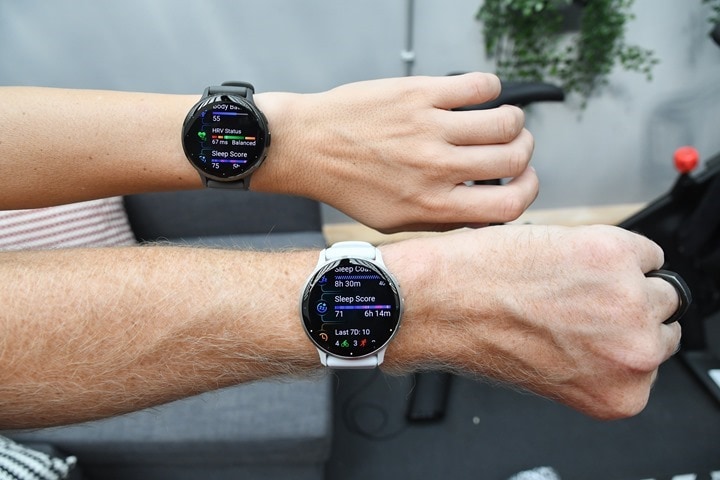
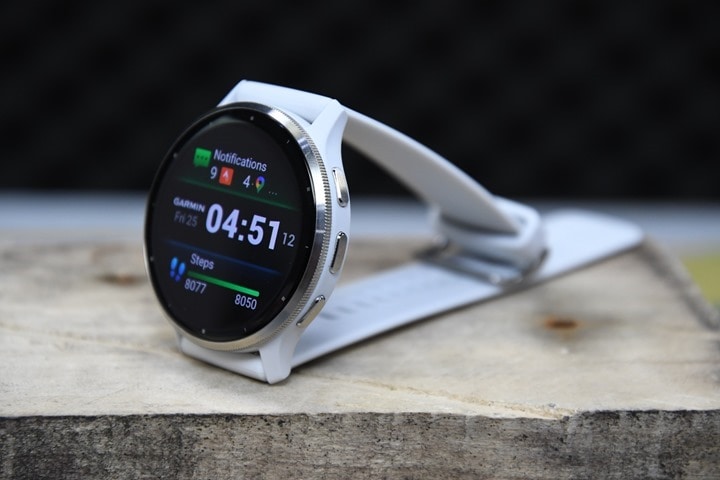
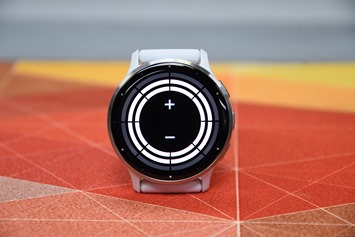
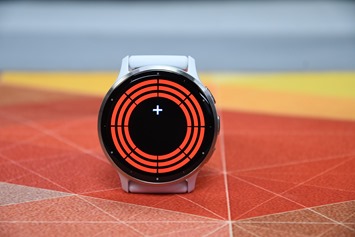
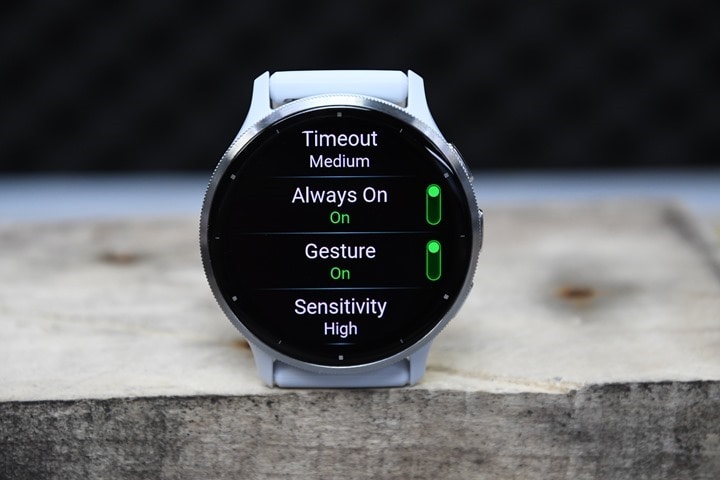
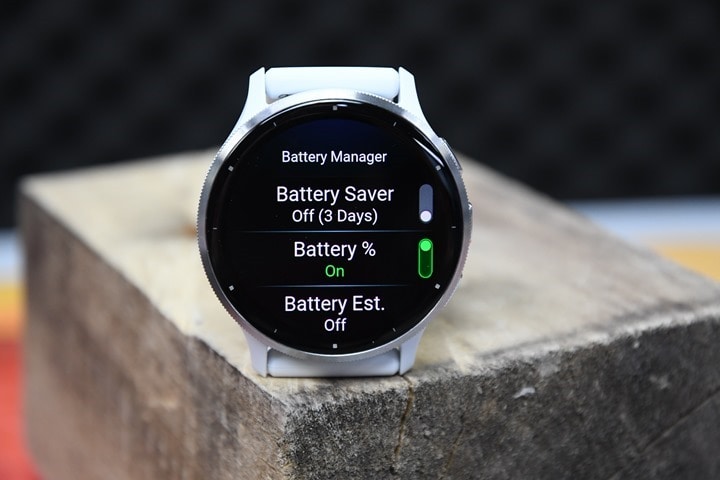
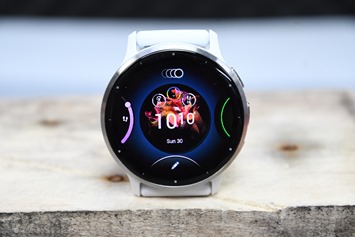
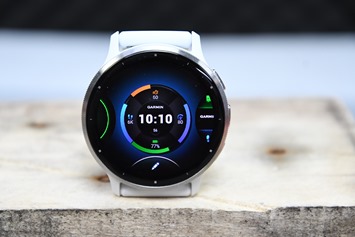

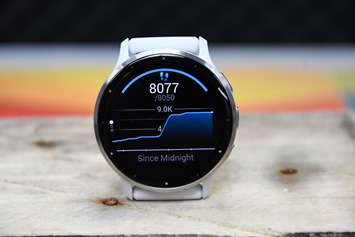
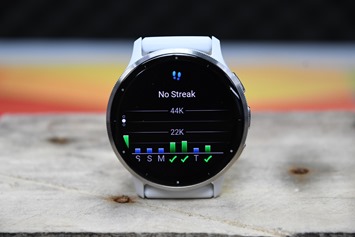
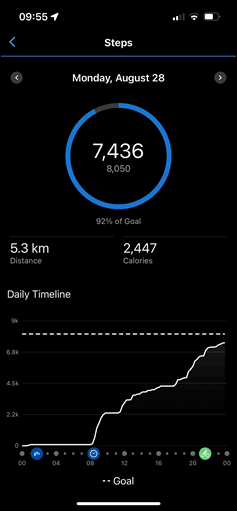
![clip_image001[6] clip_image001[6]](https://media.dcrainmaker.com/images/2023/08/clip_image0016_thumb-1.png)
![clip_image001[8] clip_image001[8]](https://media.dcrainmaker.com/images/2023/08/clip_image0018_thumb-1.png)
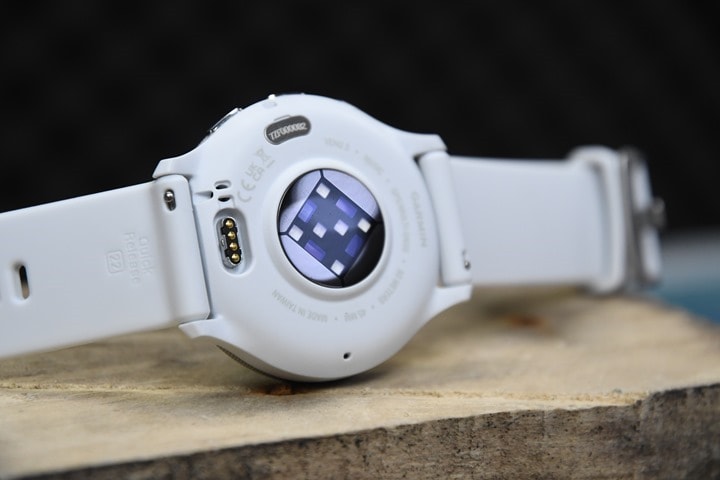
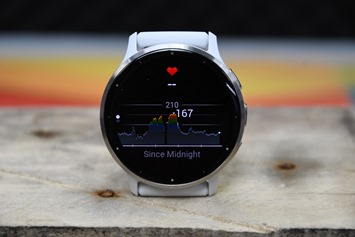
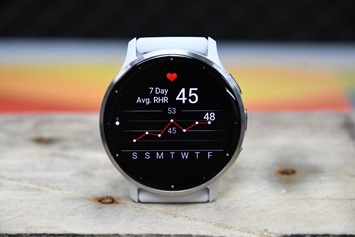
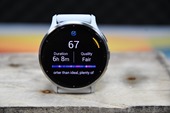
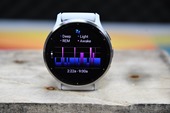
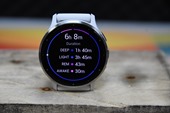
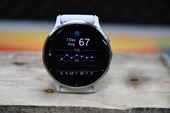
![clip_image001[16] clip_image001[16]](https://media.dcrainmaker.com/images/2023/08/clip_image00116_thumb-1.jpg)
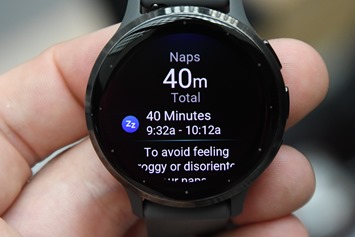
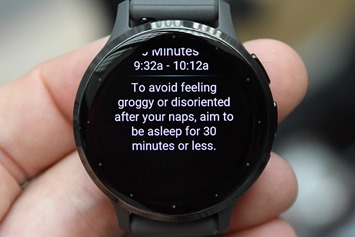
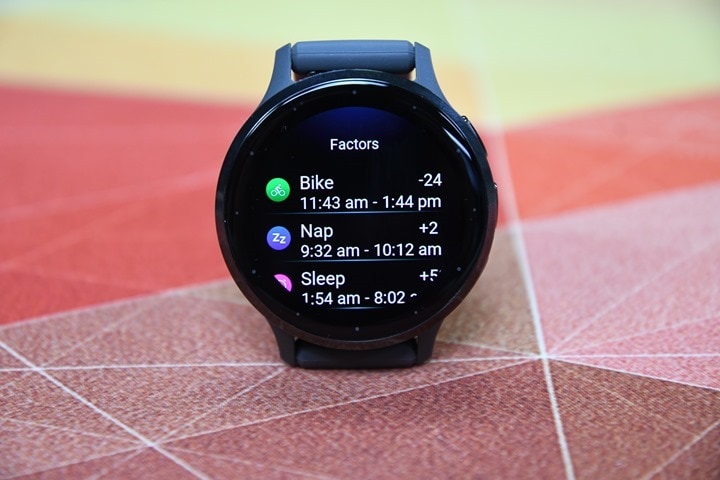
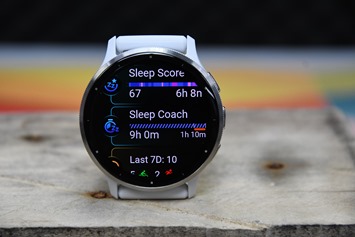
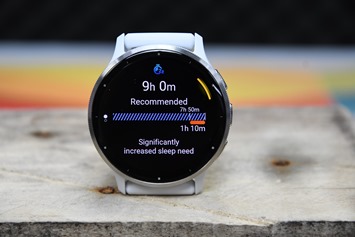

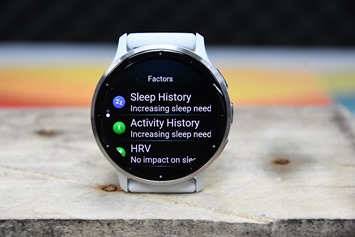
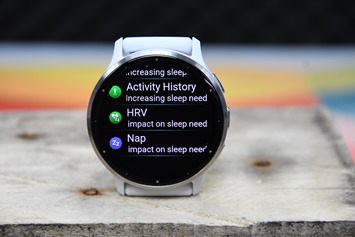
![clip_image001[6] clip_image001[6]](https://media.dcrainmaker.com/images/2023/08/clip_image0016_thumb-1.jpg)
![clip_image001[8] clip_image001[8]](https://media.dcrainmaker.com/images/2023/08/clip_image0018_thumb-2.jpg)
![clip_image001[10] clip_image001[10]](https://media.dcrainmaker.com/images/2023/08/clip_image00110_thumb-2.jpg)
![clip_image001[12] clip_image001[12]](https://media.dcrainmaker.com/images/2023/08/clip_image00112_thumb-1.jpg)
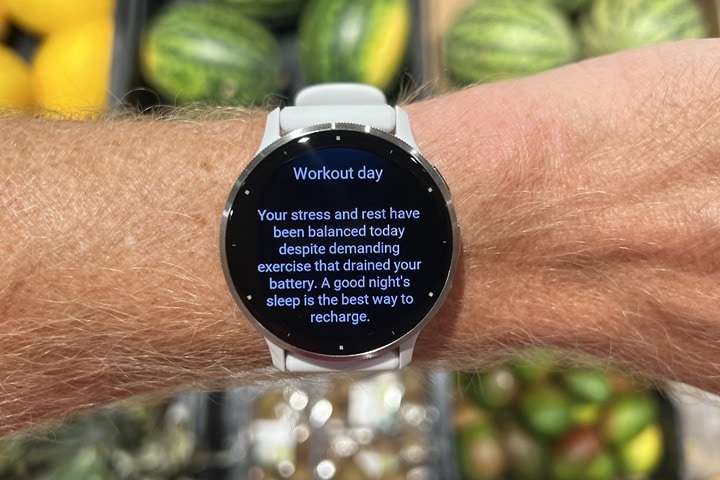
![clip_image001[14] clip_image001[14]](https://media.dcrainmaker.com/images/2023/08/clip_image00114_thumb-1.jpg)
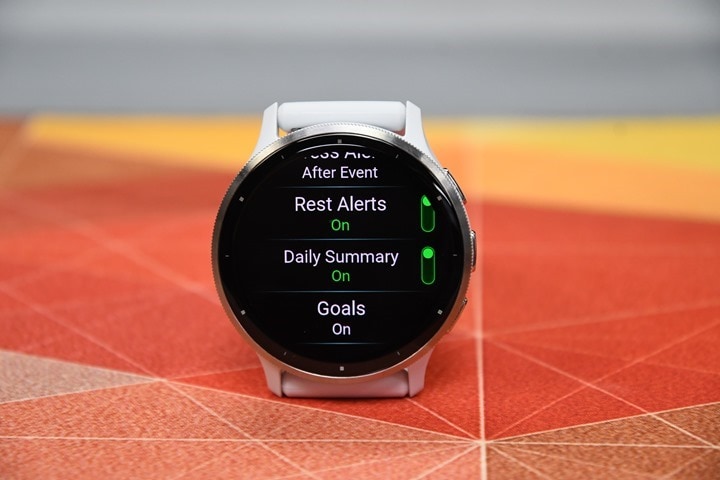
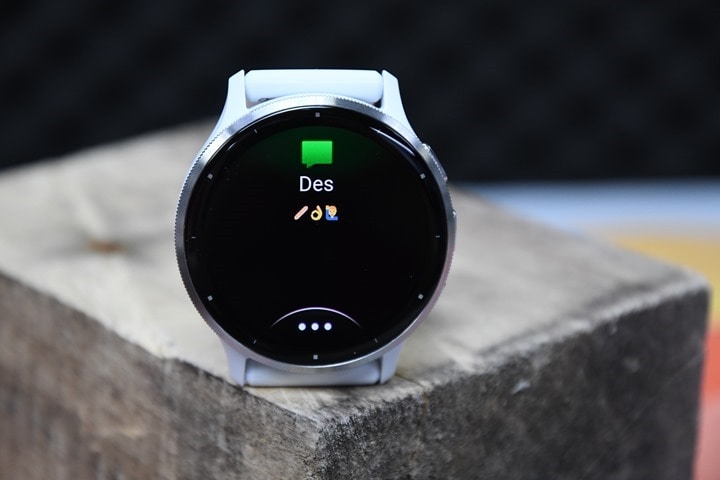
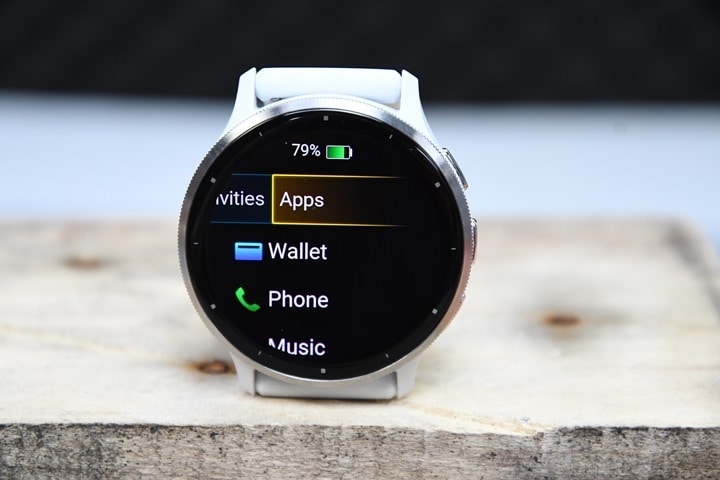
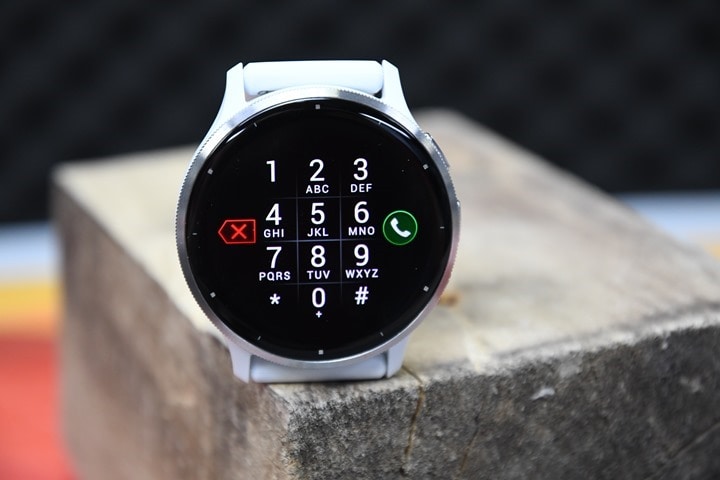
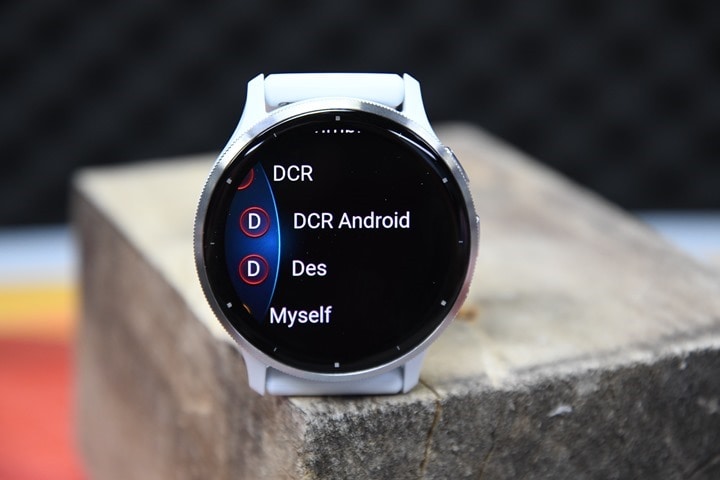
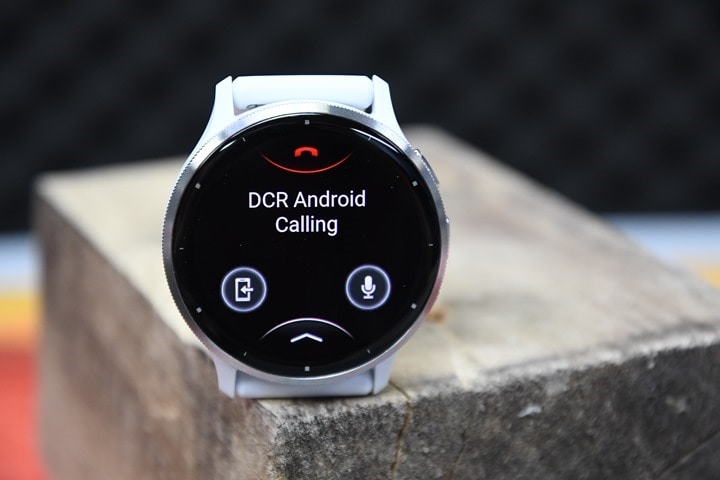
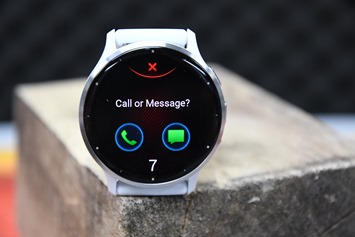
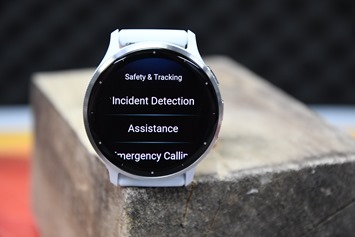
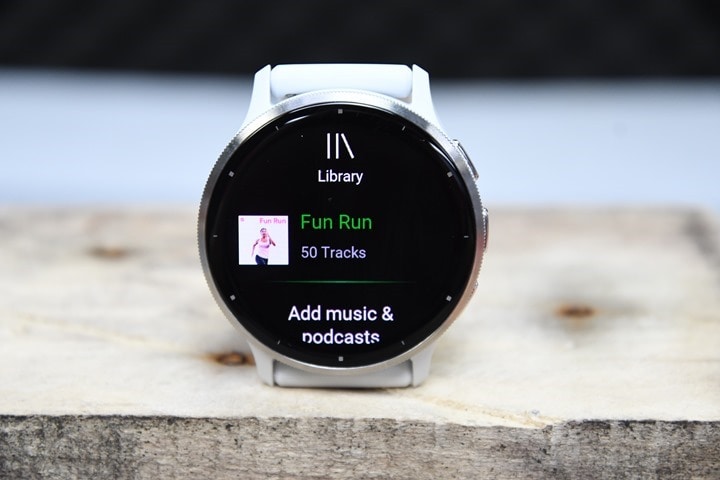


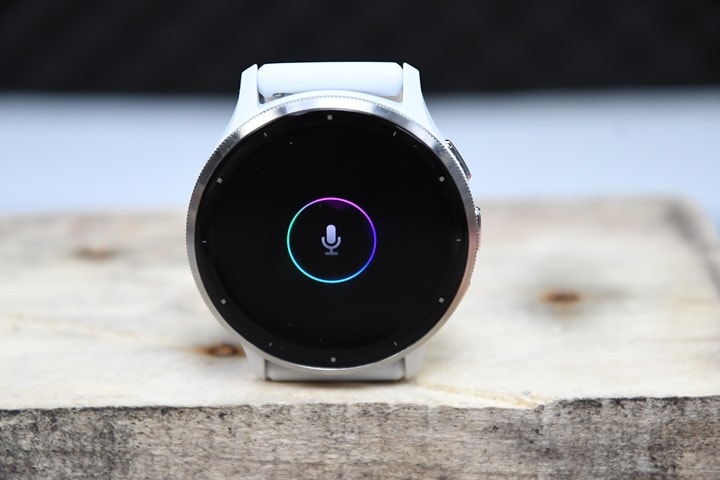
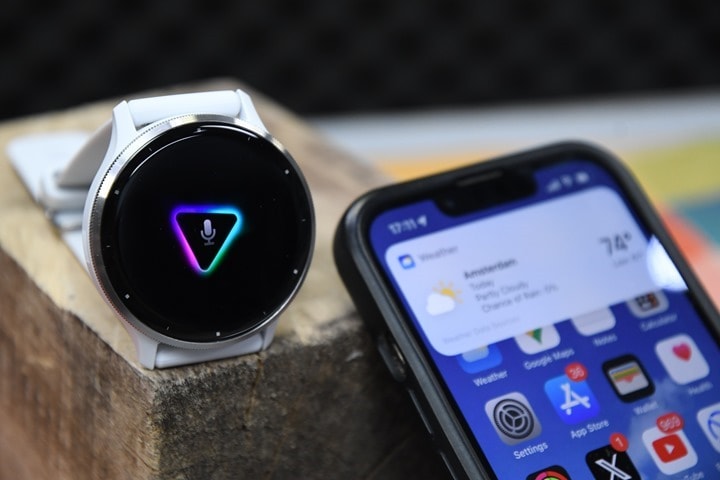
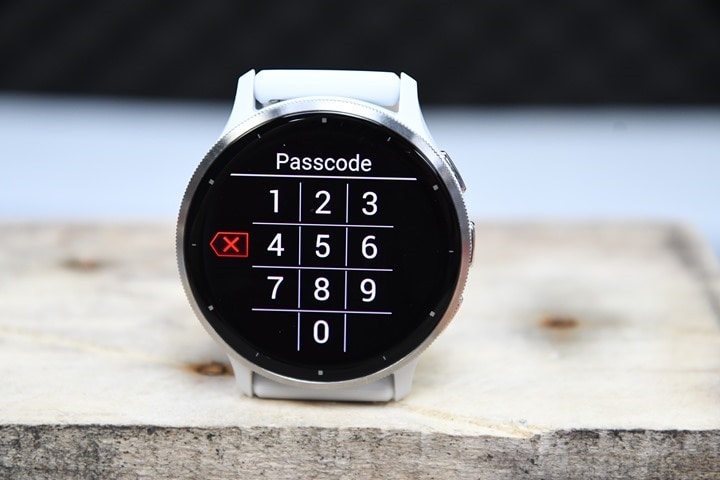
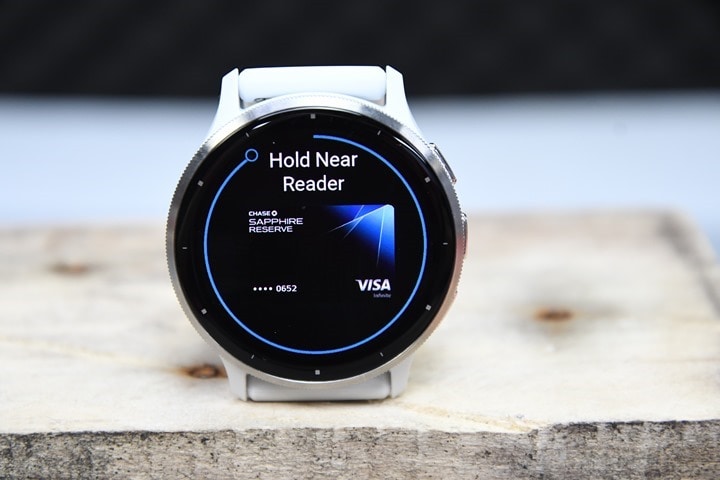

![clip_image001[18] clip_image001[18]](https://media.dcrainmaker.com/images/2023/08/clip_image00118_thumb-1.jpg)
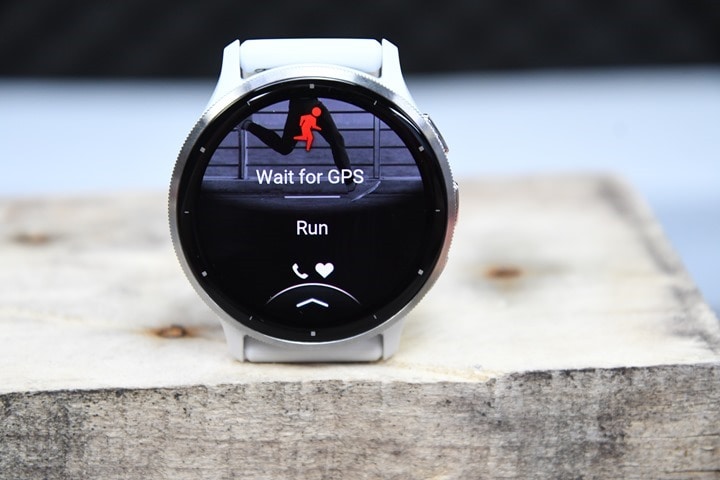
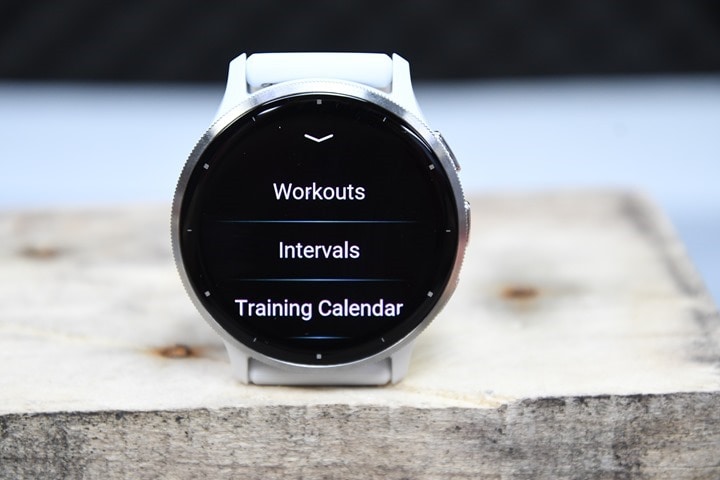
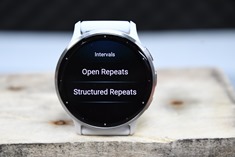
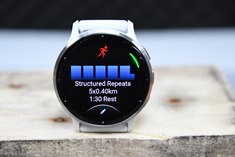
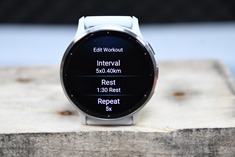
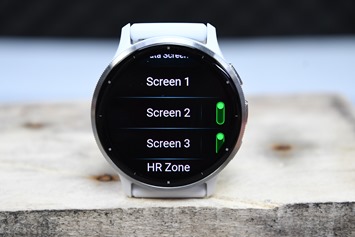

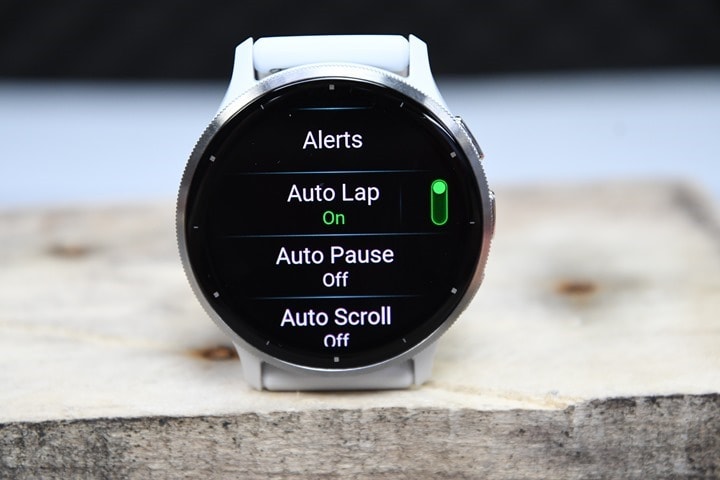
![clip_image001[20] clip_image001[20]](https://media.dcrainmaker.com/images/2023/08/clip_image00120_thumb-1.jpg)
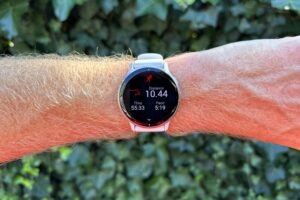
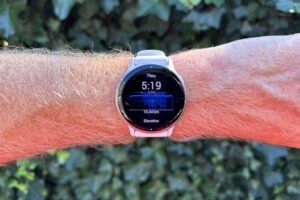

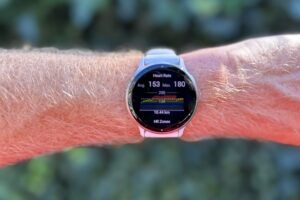
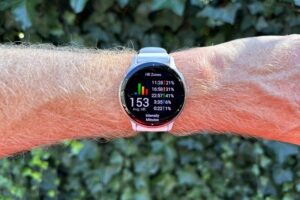

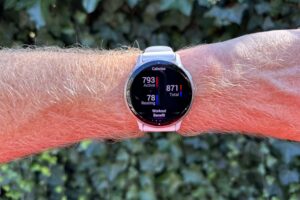
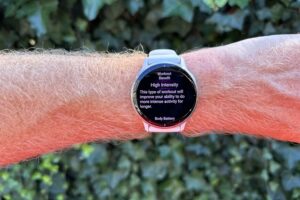
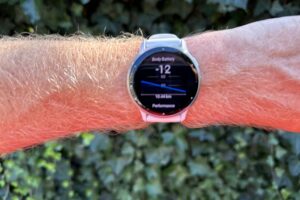

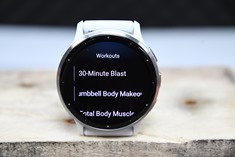
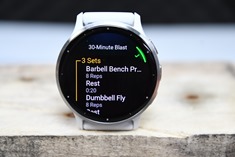
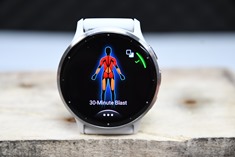
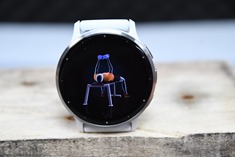
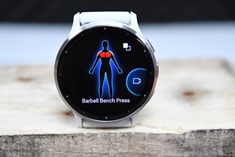
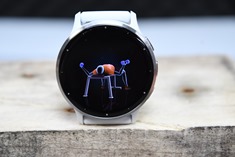
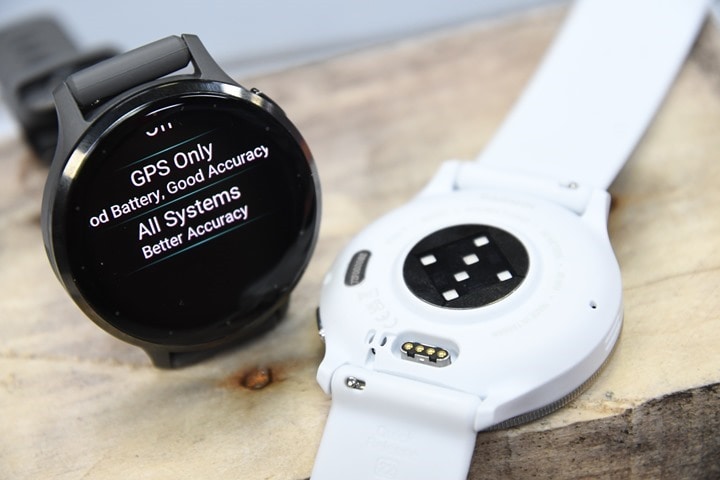

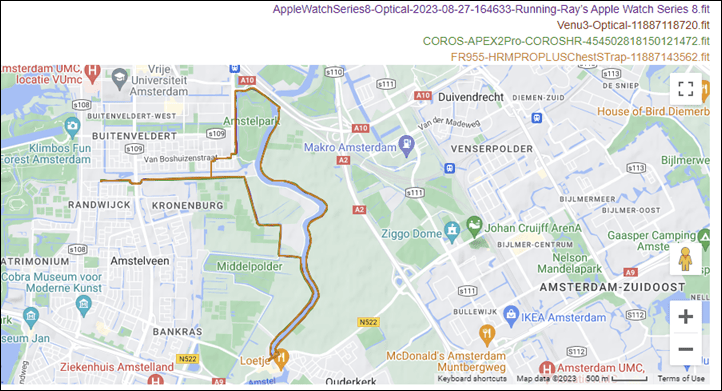
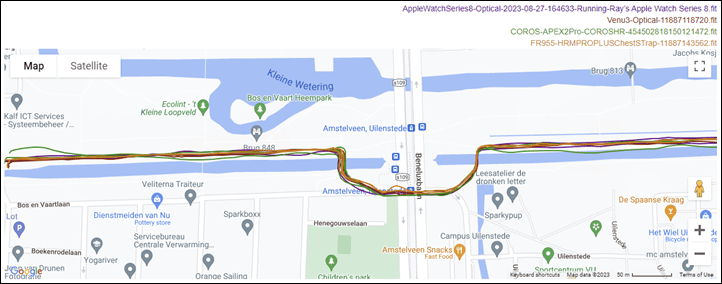
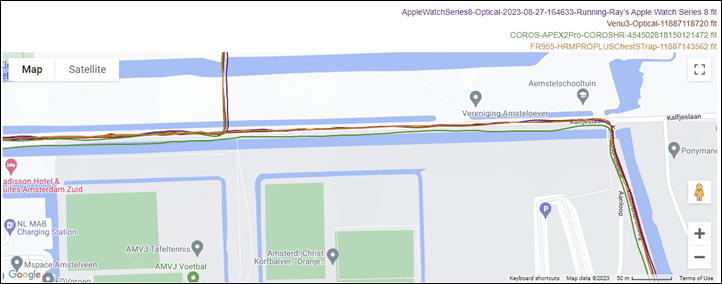


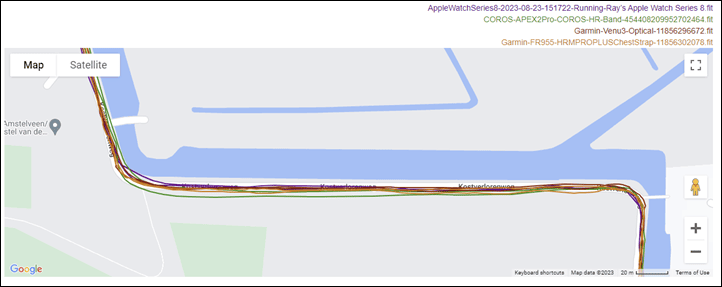
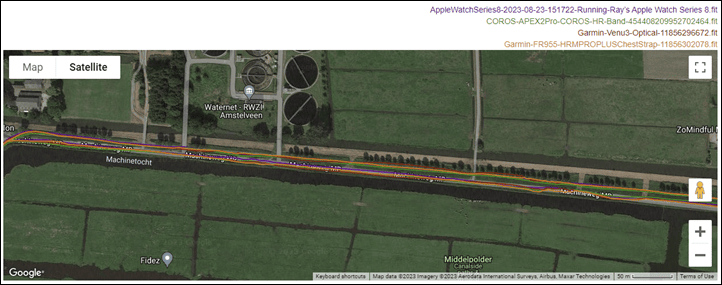
![clip_image001[22] clip_image001[22]](https://media.dcrainmaker.com/images/2023/08/clip_image00122_thumb.jpg)
![clip_image001[24] clip_image001[24]](https://media.dcrainmaker.com/images/2023/08/clip_image00124_thumb.jpg)
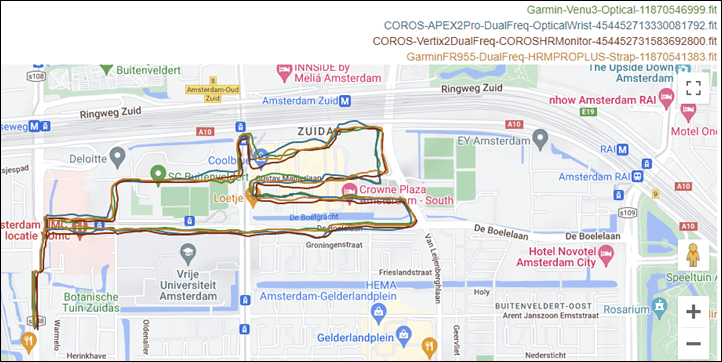
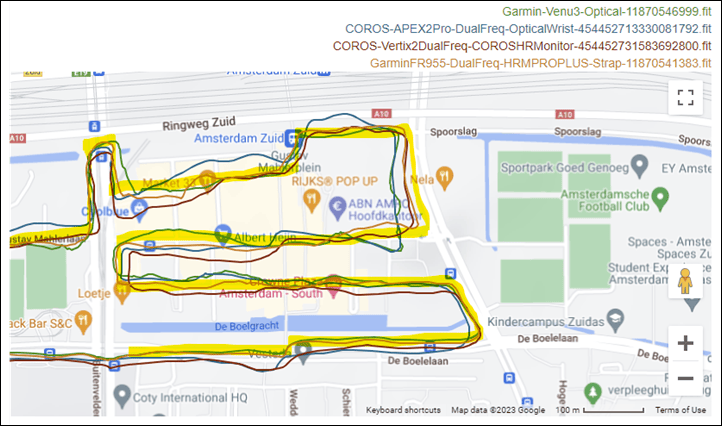




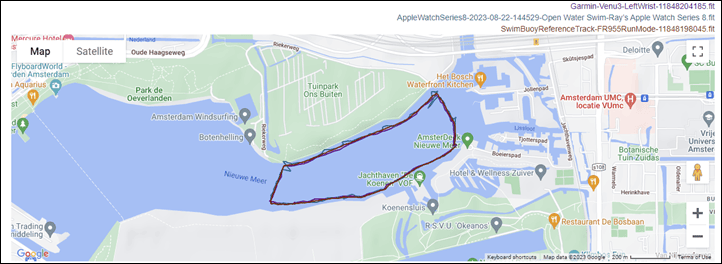
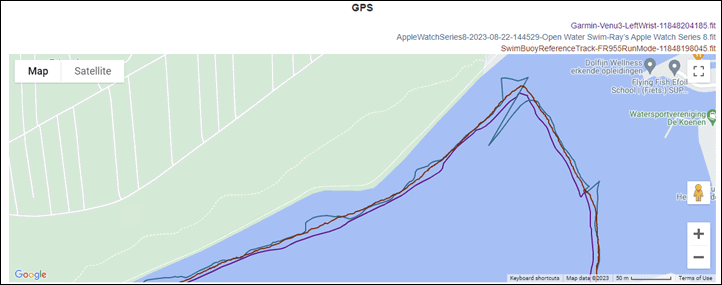

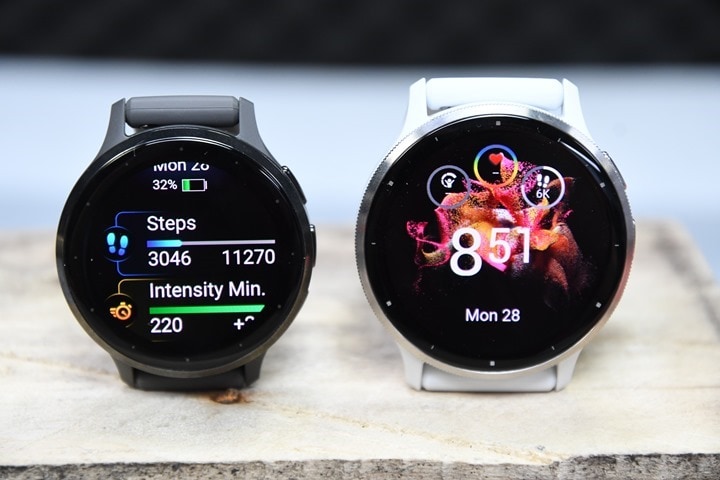
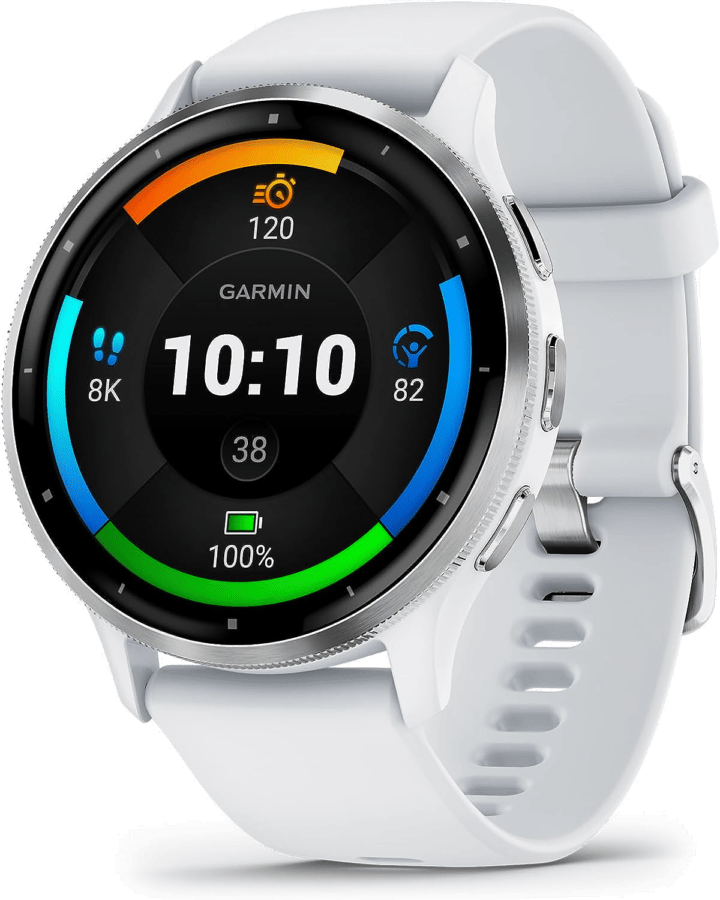
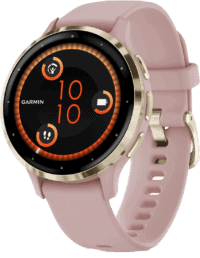
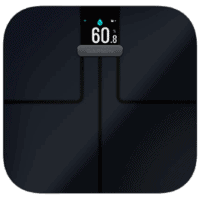
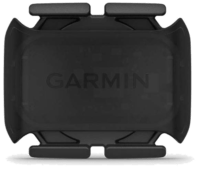
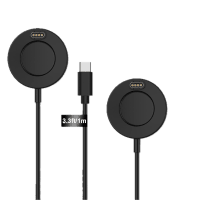

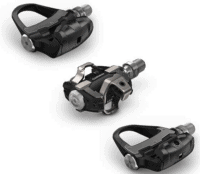
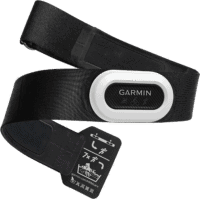





















Still no multisport :(
Wifey loves the design and the screen for the Venue series, but the lack of this profile drives her away from it.
There’s Forerunner 265/265S with proper multisport support now. Costs around the same, I believe.
That is what does not even make sense. I get that garmin wants to fragment their product offerings to push people into higher tiers, but now multisport is on the 265 tier. Why can’t they bring it to the Venu that costs the same and plenty of people rather prefer the looks of it? Makes no sense to me.
Imagine upgrading from a 2019 $299 245 to a 2023 $449 Venu 3. No more training status/load/effect, daily suggested workouts, navigation/courses, external hr for swimming, pacepro, etc.
Just because a watch is newer, doesn’t mean it’s an upgrade if it’s a different product line. Presumably, if you had a Forerunner, you’d look at a new forerunner to upgrade, unless you decided it had a lot of features you never used and want a different feature set.
Just read your Venu 3 review. Very informative. Thanks
Okay! The FR series have all the functionality my girlfriend needs… So could you please let me know where I can get the Forerunner 265 in rose / gold for her?
Aesthetics matter, and for a lot of people. She currently has a Polar, looking to move to the Garmin ecosystem. Having the features you need on your favorite-looking watch should be normal… specially when the hardware is so similar.
Any info on whether Sleep Coach and nap tracking/detection are coming to other existing Garmin models like FR, Fenix etc.?
The question on everyone’s mind!
Yup, hoping to have that clarity shortly. Just sending over a reminder on that one…
looks like there is something in the pipeline, my sleep score details in Garmin Connect (iOS) and web have been looking much more extensive for quite some time, have an Epix 2
Any Luck?
Any response from Garmin Ray? Cheers!
Any updates on whether Sleep Coaching or nap tracking coming to existing models?
Got any news on this feature or Beta for the Fenix etc?
Great review as usual. I wonder if any of the new sleep related features like Sleep coach and naps will be coming to existing Garmin watches.
Hi Ray,
thanks for the review!
Looks like even more features will never land in the Forerunner realm. Jetlag advisor is especially annoying – it would fit into the Forerunner (travelling triathlete) category nicely and it is now present even on Venu series (along with Fenix 7), but not on Forerunners.
Really hoping jet lag adviser does end up on my FR955 at *some* point. Although losing hope as time goes on… It doesn’t really make sense to have it on this new Venu but not on higher-end Forerunner models.
Thx for another great review! I’m a little confused if the Venu 3 could handle Stryd… Footpod is possible, cycling power too, but what about ‘running power’? Do I miss the power part and the Stryd is only used for pace and distance?
Stryd power works independent of the Garmin Run Power feature which some watches have (e.g. Fenix 7).
On the contrary – the introduction of Garmin Run Power still causes issues when using Stryd Workout app and uploading data to platforms like TrainingPeaks.
I know that. I have a Fenix 7. But you have to pair the Stryd twice: As Footpod and as Powersensor. So my question was if I could pair both with the V3.
There’s no running power support (native) on the Venu 3.
So while you could pair it as a power meter in cycling, you can’t pair 3rd party power meter sensors yet within the running profile.
That said, I’m sure Stryd will release their CIQ apps to allow it via their own apps, as the Venu 3 would support that just fine.
The new 8.25 added native Run power. As well as running dynamics. Hope you will give that a test soon….
You know i expected more from Venu 3. I expected ECG, body temperature and more functions like other brands have. I dont know what is wrong with Garmins ECG, bit this saga is draging to long. If some no name brands can get approved in no time, i dont know what is happening with Garmin.
No name brands originate from places like China where they can skirt the FDA. Here in the US, the amount of red tape and regulation simply results in very slow process. I am sure ECG will come soon enough to this new watch.
They don’t want to end up like Samsung, which will never have FDA approval for their pulse wave blood pressure monitoring in the US, because they didn’t follow the rules; even as nearly every other country has approved it. I say this, not in support of the rules, only acknowledging that they exist.
I have the Venu 2S which I love. While this new one offer great new features, I’ll pass because it still misses Kayaking profile and the ability to save an activiy and resume it later (which I would use for all day bike / kayak trips with pauses, and get a single gps track at the end).
I’ll follow various firmware updates and hopefully Garmin will add more features.
Thats exactly what I’d need with my Venu 2:
Kayaking, badminton and pause when doing kayak and bicycle trips to see the big picture after a busy day. Or possibility to combine and merge individual cycling/kayaking sessions.
When you stop an activity you can swipe right (normal watch face will be shown) and activity will be paused till you swipe left again an push the start button again to resume activity
Yeah, but that keeps the GPS signal open/on. It’s basically just pause, not resume later.
Resume later is on Garmin’s Forerunner/Fenix watches, and allows you to save it for another day (or whatever time period). For example, I used it last year for an 8-day hike, allowing me to continue it all on a single GPS activity/track.
And inline skating, table tennis, beach volleyball, badminton, etc. Many sports that are very popular where I live (major cities) and I know plenty of Garmin users practicing those sports and being unhappy they cannot track them on their Venu watches. Really such stupid decisions on Garmin’s part. :-/
This -> Need kayaking!
Does it support wireless charging. I’m sure some of the other Garmin watches do?
The confusing lineup which Ray mentioned: I totally agree and if i could decide, i would cut it down to Forerunner 2xx, 9xx and F7 line and offer all of them in both MIP and OLED.
But i know marketing strategies works differently.
And Instinct. But yes in terms of color screens devices, 2xx, 9xx and Fx in both MIP/OLED sounds perfect. The cheaper watch segments (55/Venu 2) can be catered for by offering older generation watches (245/F6) at reduced prices.
But Venu is not cheap, far from it. Garmin charges a lot yet delivers just a small part of features available on similarly priced or even cheaper watches. It does not make any sense nor does it make Venu’s users and Garmin’s customers happy.
Will you be reviewing Coros Pace 3? I was kind of stunned not to see a review from your side yesterday, tbh. The world kind of didn’t look right …
I will be reviewing it, once the unit I ordered arrives.
Maybe borrow the one DesFit has? :)
Des is in Colorado and Ray is in the Netherlands, per Strava ;) . By the way, Ray, I think your Pacer is much better than the Watch :)
Thanks so much for this useful review Ray!
The most important question that I didn’t see covered anywhere: Have they finall included the “pause/resume later” function for activities to the Venu Series (as on FR and Fenix/Epix)? Thanks for clarifying!
Thanks for the review Ray! I would love to see a huge part of these functionaities embedeed in a Garmin ring (or ar least an updated Vivosmart / Vivosport tracker). Any hint/notice on that?
Price like the Forerunner 965, which has many more features. In this situation, buying the Venu 3 is completely uneconomical.
Forerunner is $150 more.
My mistake, of course I meant Forerunner 265.
Hi, I saw on the Garmin website that the Venu 3 will have audio on runs, bike etc like the forerunner does, so you get in your headphones each lap your pace, time etc, is that right?
> Playback controls are limited to playing specific playlists you’ve downloaded, but you can pause/skip/change volume/etc.
This is one of several baffling user experience issues I’ve noticed with the Garmin Spotify app. If you play back MP3s (or other local audio files) using the My Music provider, you’re absolutely given the ability to open a playlist and scroll to the exact song you want to play.
Some other annoying issues I’ve noticed:
– When selecting music / podcasts to sync, it takes forever to scroll to older playlists / podcast episodes, since lists are only loaded 3 to 6 items at a time. This issue can be mitigated by setting a custom order for playlists in the Spotify webapp so that the playlists you sync are at the top, but users shouldn’t have to do that. (Custom playlist ordering isn’t even available in the Spotify, so I doubt the vast majority of users even know it exists)
– Related to the previous point, you can only sync one playlist at a time. So if you want to sync 5 playlists (for example), you have to select the first one, wait for it to sync, select the 2nd one, wait for it to sync, etc. This is extremely annoying, especially given the fact that Garmin watches have slow Wi-Fi, and it would be great if you could select multiple playlists to sync. If Garmin/Spotify can’t figure out how to do it in a user-friendly way on the watch, let people select playlists to sync on their phone, like how it’s done with Apple Watch (from the Spotify phone app).
– When adding music, the “Recently Played” list is always empty. This seems like a bug
– When playing a podcast episode, there’s no indication of the exact time (minutes and seconds), so it’s hard to seek an exact position in the episode. Also, the progress ring is blocked by button hints (for button-based watches), so it’s combined with the previous issue, it’s even harder to know exactly where you in the episode at times
– When playing a podcast episode, sometimes (all the time?) your previous playback position is not restored (it doesn’t pick up where you left off.)
I don’t know how much of this is on Garmin vs Spotify, but to me it speaks to the fact that UX is not a priority at Garmin.
I’ve left reviews on the Spotify app and submitted ideas to Garmin, but I don’t expect anything to change. Maybe I’m alone in thinking that UX is important ¯\_(ツ)_/¯. Obviously the trend for a long time has been to make apps simpler, and it’s come at the expense of certain types of usability (especially usability for power users.) But IMO there’s a lot that could be changed here to improve the UX while preserving simplicity.
> (Custom playlist ordering isn’t even available in the Spotify, so I doubt the vast majority of users even know it exists)
Sorry, meant to type “in the Spotify *app*” here.
To be clear, I don’t understand why the Spotify app on Garmin watches doesn’t let you open a playlist and select the exact song you want to play, especially since it’s absolutely possible with the My Music Provider (which proves that it’s not impossible or even impractical).
Do they just not care about this use case? I’ve seen others complaining about this issue as well. Of course the workaround is to select a playlist and press the “skip track forward” button until you get the song you want, which is ridiculous.
> When selecting music / podcasts to sync, it takes forever to scroll to older playlists / podcast episodes,
> you can only sync one playlist at a time
To be absolutely clear, I mean when *adding* music / podcasts to the watch (i.e. first sync.) There’s no problem syncing playlists which already exist on your watch.
It’s still pretty annoying, especially if your Spotify downloads have expired or you’re setting up a new watch, and you want to add multiple playlists to your watch.
I was really wanting a venu 3 to be basically a 265 with a speaker and mic. I like 5 buttons and no trail run kind of sucks also. This would have been a perfect watch for a cyclist who sometimes runs. I would have loved to be able to take a call on my watch while mountain biking (using a 1030 plus) so I don’t have to dig out my phone.
The wait continues.
I really hope some of these software updates trickle back to the Venu 2 Plus. I know it can listen to power meters, for instance, because I’ve got a third party data field that shows it even if it doesn’t process it quite right in Connect.
Seems like a tremendous hardware platform. Big AMOLED, ElevateV5, mic/speaker. So- why not just add maps and call it a 975? I expect that the processing horsepower is the same?
Garmin is starting to have too many similar watches.
Will the new features- such as nap detection, get eventually ported to the Epix, Fenix7P and 265/965?
Great review!
It looks like none of the “team sports” profiles are coming to either Forerunner or Venu lineups, and are only available on Fenix/epix – any chance of those eventually coming to Forerunner/Venu, do you think?
500 euro in the EU. Way too much for me to consider replacing the VivoActive 4s that I got 3 1/2 years ago for 260 euro.
Somehow we got from “electronics get cheaper every year” through “every year more features for the same price” to “price hike at every opportunity” (the Venu 2+ retails at 350 euro atm)
I think it may finally be time to upgrade my original Venu. While I’ve been very happy with it for almost 4 years, I’ve wanted the battery life improvements from the Venu 2 and the microphone/speaker that enabled calls and intelligent assistant capabilities from the Venu 2 Plus. I’m also looking forward to the improved battery life and additional sleep and HRM features. I hope you’re right that ECG capabilities will be enabled sooner rather than later. I’m very pleasantly surprised by the cycling HRM accuracy. Do you think it’s accurate enough to replace wearing a chest strap?
Does the Sleep function continue tracking even if I get up in the night to go to the toilet
Yes, definitely.
I do see some cases closer to the normal wake-up time where it’ll end sleep. For example this morning I woke up at 7:10AM (overslept for a run), and then was up for 15-20 minutes, before I fell back asleep on/off for another hour or so. It didn’t agree with me actually being asleep the remainder of that time. It wasn’t great sleep, so, I guess.
But otherwise no problems at all.
I’d like to see some of these features being pushed to venu 2. Such as morning report, hrv, daily summary, etc. I tend to believe that we are being rushed to renewing our equipment, when there’s plenty still to enjoy in our previous investment.
Great and detailed review as usual. Leaks on the Venu 3 also featured a body temperature measurement (screenshot leaks with body temp widgets). You don’t mention it in your test. Have you discussed this with Garmin or do you have any information on this function ?
I suspect the hardware is capable of it (V5 Elevate sensor), but as of today such a feature isn’t enabled or what-not on any Garmin watches.
Always appreciate your indept reviews. Incidentally, one bit of technology that might be of interest to you are hearing aids, especially the newer Phonak line that use standard bluetooth instead of the ‘band’ reserved for hearing aids. I have the first gen Venu and listen to music via my hearing aid and love the versatility of being able to go for a walk and listen to music without my phone. One thing that is troubling is that the connection with the H aid is not strong enough as it cuts out intermittently – on windy days even worse.
Would love to see your thoughts on hearing aids. You’re a young man compared to me so I can understand why this has not been on your radar (I’m making an assumption here).
I am very tempted to upgrade to the Venu 3. Just trying to determine if I should consider the more expensive Epix Pro or Fenix 7 Pro. More research to be done by me here.
Thank you.
I have Kirkland hearing aids (manufactured by Phonak) I use my phone for streaming and for calls. I accept calls via my Vivoactive 4, but it has no mic or speakers, so it does not interfere with using my aids for the actual calls.
I am concerned that the Venu 3’s ability to handle calls through Bluetooth may preempt my hearing aids.
You may be ok Larry, because unless your Kirklands use the standard A2dp bluetooth protocol, it should not pair to the Venu3, and even if it did, you can simply not pair them. I had to pair my Phonak Lumity to my Venu like I would any other Bluetooth ear bud.
Hi, for the new sleep Tracking. Is the hrv also in Garmin Connect app visible and is it factored in the Overall sleep Score?
And do you know if these Updates come to the Fenix 7?
Great review Ray, and sounds like there’s some exciting new features. One that you mentioned briefly in your review, but didn’t show it in action, is the apparent new feature that shows text message photos on android, I’d love to see how that looks
Is there any screenshot of the reply function and the new keyboard for messaging?
I haven’t found any information on that feature for Android users.
I am really satisfied with my Venu 2 Plus. Heart rate tracking, ECG, GPS tracking, offline Spotify, Pay, Notification and battery life make the watch a good all-rounder.
Nap detection, HRV tracking, Morning Report, Recovery Time and Sleep Coach are nice features, but I see them more as software updates for existing (Venu) watches. It can be seen in the forums how many Venu users are asking for these features.
I hope it very much that these features also come for the predecessor models, but already expect that Garmin wants to sell you the new Venu 3 with the features.
That’s why Apple is so successful with their watches in terms of sports, even though they hardly had any fitness features to begin with. Everything came via update.That’s why Apple is so successful with their watches even in sports, although the watches had very few fitness features in the beginning.
The update at Garmin have already become better just with the new OTA beta updates. But after the Vivoactive 3 Music, Vivoactive 4 and now Venu 2 Plus I’m tired only by buying a new model to get new features.
Hardware on Venu 2 Plus is capable of all these new software features, yet they’ll probably never come to it as otherwise the only practical difference between Venu 2 Plus and Venu 3 will be the battery life. For example, original Venu has sleep tracking but doesn’t have sleep score – which is present on Venu 2/2 Plus/3. Obviously, this score is just a byproduct of sleep tracking, so adding it will be trivial…
Sometimes it becomes really crazy – I remember how Garmin disabled perfectly working temperature sensor on Garmin Edge Explore because “this feature was not supposed to be present on this device and was enabled by mistake”. Think about this – hardware was present and working, software was supporting this – yet feature was removed several months later (and users were, obviously, using it).
I also fear that Garmin will continue this outdated business model.
Despite the fact that the older models, such as the Venu 2 Plus, are capable of handling the new features, the new features are only rolled out in the latest model.
This is not necessary because the Venu 3 has better sensors, a larger display and above double battery life. This holding back of features is simply outdated.
As the Venu series has now reached 500€ with the Venu 3, I will take a closer look at the Apple X coming next year. If the Apple Watch will have a good battery life, I will consider switching the systems.
agree …it seems that they think they are still living in the 20th century when companies like Garmin thought they ruled the world….why buy a non updating Garmin when for a ‘few’ dollars more you can get the best of apple etc? garmins only saving grace is that an apple watch isn’t platform agnostic….if it were Garmin, Samsung etc might as well close down
Does the screen turn on immediately after you twist your wrist? My original Venu has this infuriating delay when doing the wrist movement and the UI in general feels laggy. The screen takes up to 3 seconds to turn on, especially when using watch faces other than the default one. It happens with faces made by Garmin themselves.
I suppose it’s a slow CPU or storage, but this very simple but important feature is something that has kept me away from other Venus. I also have a Fitbit Versa 2 (older than the Venu) that has a way more responsive interface.
Thanks
Great review once more, Ray – Thank you 🙌🏻
I think my wife will go with the Venu 3, upgrading from the Venu SQ.
However… As an Epix Pro user I would be very jalous if the new health and workout metrics doesn’t get included in a future firmware for my Epix Pro 😉
Any expectations or news regarding this? Are the new features going to hit the Fenix 7 Pro and Epix Pro line up?
Thank you!
Regards from Denmark,
Patrick
Great comprehensive review, thank you for putting in the hard work. You deserve a bonus nap!
As a moderately pleased Venu 2 user, I would not recommend the series going forward.
There’s been a steady drumbeat of small updates to Forerunner, Fenix, etc, but essentially no feature/value updates to Venu 2 in the last 2 years. Many Fenix/Epix updates were backported from 7 to 6, but no backporting of Venu 3 features here (HRV status, sports) to Venu 2. That is a disappointment.
If you’re going to spend this much money on a watch and you want Garmin, buy the devices Garmin cares about and has demonstratively improved over time.
I agree with you. I have an expensive venu 2 plus that never got any serious updates and with a lot of missing features.
The original Venu also was abandoned by Garmin shortly after being released, with no new features or enhancements. To make matters worse, its AMOLED screen suffers from extreme burn-in that makes it unusable after a year or two.
With Garmin is: what you see is what you get. I don’t think they’ll add ECG or body temp monitoring even if the sensors support it.
Yeah, for whatever reason, the Venu series just doesn’t get much in the way of updates. I don’t really understand it. Perhaps we’ll see those tides change with Venu 3, but hard to know.
As for ECG, I’d separate out that from other updates. This is more of a case of catch-back-up than anything else. Garmin absolutely needs that to be competitive here against Apple/Samsung/Google-Fitbit for this market segment. While we can debate the value of it for the majority of people, it’s become a ‘must-have’ item via never-ending media stories about it.
So you are 99.9% sure it has the hardware to do it???
The back side looks a different from the Venu 2+ as far as what can be used as the electrode. Only the 4 “corners” around the Elevate os metal, right? But I guess that eliminates the need for a isolator ring…
Different to the F7 pro, where the back is metal and probably shorted to the bezel via the screws… And hardly any isolation. Won’t take much salty sweat to short that out….
Could be interesting if you could take a multimeter and ohm check the venu 2+ from bezel to ring and the same for V3 and F7P. If there is electronics to measure voltage inside, you should see some 10M ohm or something, I’d think…
But if you’re not strictly a runner – what other Garmin would you recommend? That’s why I never bought a Forerunner. I do Bootcamps, Strength Training, HIIT workouts, cycling, etc. which is why the Venu appealed to me. I still have the original and love it.
I agree with you hundred percent. Venu series is expensive but has few features and very weak support. It’s really no surprise Apple is so successful. Their watch is similarly priced and people know they’ll get support and stream of new features for years to come.
E-commerce links? Wanna buy and benefit your hard work.
So is Venu 3 better than suunto 7 ( after 3,5 years display issue)?
I hope Garmin comes out with passive Afib scanning soon. A study validated they could do this with the Forerunner 945 (elevate 3 sensor). link to sciencedirect.com
All the whizz bang and still no basic stairs count?
What makes you think that?
link to www8.garmin.com
The Venu Sq models didn’t have a barometer so couldn’t count floors, all the other Venu variants have barometers & floor count.
Thanks for the review, the lack of running dynamics is a deal breaker.
My wife is looking for a nice looking replacement of her old 645 and this could be the one. But running dynamics is a deal breaker. Wish there were a nice looking alternative
I’ve.got an original Venu and very.happy with.it. Battery is starting to go now so this is a timely release.
The new sleep/nap features appeal to me also.
I’m a cyclist but thinking of running again, but nothing serious. So question is Venu 3 or Forerunner 265?
I think the 265 is the clear winner. the venu 3 is missing all sorts of sports features.
venu 3 is missing trail run and all the load type stuff. No running dynamics, power, etc. No floors climbed.
I really love the speaker and mic, but its is just too much of a compromise. I was hoping the venu 3 would be the 965 with a speaker and mic, it is not.
The 265 is the clear winner if you need the missing sports or running dynamics, etc., but not if you don’t and consider the microphone and speaker more important. By the way, the Venu does have floors climbed.
Will the watch give you a HR for your swims? If so, how does that compare with the chest strap and conpetitors?
thanks for the great review….quick ask: does the 3 keep venu auto walk/run tracking? i switched from venu 2(+) to 955 and miss that feature enough to go back to venu 3
thanks again for great content
Based on the manual it does.
(Page 38)
link to www8.garmin.com
> Auto Activity Start: Allows your watch to create and save timed activities automatically when the Move IQ
feature detects you are walking or running. You can set the minimum time threshold for running and walking
So ST!LL no Smart wake??? I can’t believe it. Come on Garmin!! It’s can’t be that hard to implement??
I been planing to buy a Fitbit Charge 5 just to get Smart wake and sleep with both that and my Venu 2. Was hoping I could just upgrade to Venu 3 instead…. Guess the old Venu 2 will have to run a couple of seasons more….. Sad.
Not the only one with this dream. See link for forum post. Plenty more like that on reddit
I would venture to guess this is a patent related issue vs a technical limitation.
Would also LOVE to get this feature!
@Jesper, maybe it’s patents but the EightSleep mattress has a smart wake and from memory other tech does too.
I’m trying to rack my brains to think of other *watches* that might have it. a patent would likely be specific to the form factor (watch)
As I mentioned, Fitbit has it. On all but the very cheapest watches/trackers.
There are several apps for ios or green garbage bin phones too, so I doubt there are patents involved. Although Fitbit (now google) has over 1500 patens….
What is guided meditation activity?
I meant how does it work?
On the Recovery time, does it do True-up or what ever the cross devices sync is called?? So if you do a ride on your EDGE, can you see the remaining recovery time on the VENU??
And add a venu run recovery time on top of the remaining of the Edge ride??
Does anyone else find it really odd that it’s been over 2 years since Garmin released an LTE enabled sports watch?
Someone says the HRV are a “fake” and won’t show up in the app as a own suggestion like pulse, sleeping points and so on. Is that true? Will we see the HRV on the app with a 7 days and 4 week range?
Best review (as usual).
Well ho hum reads like a minor update. Nothing really pushing me to upgrade. Garmin is in trouble of being outdone by Apple with thier ultra watch.
Venu 3 or Forerunner 265?
Same size, similar price, similar features. One is more sporty.
I think all these watches are going to get to a point where they offer too much. For example if you are runner how much of this stuff actually helps you become a better runner or reach your goals. Some information is truly valuable but way too many gimmicky features. I think all the companies should start offering a “vanilla” option like Android phones used to without all the bloat. Sure you can delete features you don’t need today but I’d like to start with a blank slate and add what I want
many of the features out there on the market are just made up physiological insights. there are numerous examples (I’m not looking at garmin per se here)
buyers don’t seem to understand or care (yet)
Hello all,
I currently use a Vivoactiv 3 and would like to renew it.
Now I’ve been reading for several days and just can’t decide between the Fenix 7 and the Venue 3.
I like the Fenix 7 better in pictures, but the Venue 3’s display looks so much better. If the Fenix 7 had an AMOLED display, the decision would be easier. But I also got along with the MIP display in the Vivoactiv ;)
The Epix would fit, but the price is not worth it to me.
Important to me are especially the health data. The HRV measurement is particularly important to me or do I rate this much too high?
My current Vivoactiv 3 has nothing of it not even the body battery.
Sports I do little, I ride a bike and go a few times a week “hiking” (about 1.5h each way) Therefore, I will hardly use the sports functions.
can you say something about the new features like nap, meditaion etc?
The comparison on the Garmin page brings me no further.
Thanks a lot :)
Epix pro gen 2 is almost same as fenix but with amoled screen.
Yes, the Epix has.
But as written, I do not want to pay the surcharge.
If I knew that the Venu3 features (better beat tracking, nap…. would come via update to the Epix. I would consider it.
This is the second watch with a 45-47 mm case and a 1.4” screen. Do you think more Garmin will get this form factor? And maybe with a MIPS screen?
Garmin is the king of hardware re-utilization. That 1.4″ screen is the same as the FR965, and the same in the largest Epix Pro edition. Further, I’m sure it’s also the same in a gazillion other watches Garmin has in other segments (e.g. golf/marine/ec…).
Ultimately, MIP screens will be going away for all but essentially an one or two watches (Enduro, if they continue that, else some variant of the Fenix for a little longer).
But there won’t be a Vivoactive MIP successor, nor a Forerunner 255 MIP successor. Those ships have sailed.
Disappointing to read this. Is the market for AMOLED just that much bigger than MIP or it is cheaper to produce so they will just force us into it?
I’m not a marketing guru or a business expert, but my 2 cents is that MIP screens are seen as old, outdated and uncool. If I’m being real, no runner needs anything more than an old Timex, but if someone is gonna spend hundreds of dollars on a running watch, they probably want a screen that looks nice.
Even about 8 years ago (before Apple Watches were ubiquitous), someone in a bar looked at my Garmin watch and said “it doesn’t look real” (I’m guessing they meant that the screen looked really cheap.) In the years since then I’ve seen a lot of complaints how Garmin screens look dull and washed out, especially indoors.
It’s just part of the ongoing trend of form over function and style over substance. I’m not saying this as a curmudgeon, I absolutely understand why people like AMOLED better than MIP. We see the same thing with touchscreens replacing physical controls in cars. It doesn’t matter how many usability / safety studies say that physical controls are better for drivers, the fact is that touchscreens are cooler.
4 years ago I had a lot of trouble explaining to a coworker who was noob runner training for his first marathon why runners like me and another coworker wore Garmins instead of Apple Watches like him. I tried to explain the battery life is better (“I just charge it when I go to sleep”), the outdoors visibility is better (“I have no trouble seeing the screen outdoors”), and ultimately I tried to go with my favorite analogy: Garmin is to Apple Watch is Kindle is to iPad. He was unconvinced. After all, lots of ppl read books on their phone. The other coworker (also wearing a Garmin) offered a better explanation: “Garmin was there first.” I definitely know casual runners who have switched from Garmin to Apple Watch.
Now that Garmin is going all-in on AMOLED, how will MIP diehards explain to AMOLED converts (or people who never had MIP) why “MIP is better”?
– “I can see the screen without doing a deliberate wrist gesture”
“Is it really so hard to turn your wrist and wait a fraction of second?”
– “MIP works great in daylight!”
“AMOLED is great in all lighting conditions!”
– “Watchfaces are always on and the seconds hand is always visible”
“Do you really need that?”
– “I get weeks of battery life”
“ I get days of battery life and its good enough for me”
Newer tech always has disadvantages, but once it’s “good enough” it will push out old tech. Some will argue that MIP is just as old as AMOLED, and Casio G-Shock is marketing MIP screens as new, but perception is everything.
Honestly, I would like to see a mode for AMOLED watches where the screen is truly always on (at full brightness), so I could use it for short, intense running workouts (like 30-45 minutes) where I want to be able to check my pace at a glance without pressing a button or deliberately turning my wrist. I’m sure that would never happen.
On the bright side, no one can force me to give up my MIP 955. OTOH, no one can force Garmin to make more MIP watches or for the general public to think MIP is cool. Others made the comparison to Blackberry diehards who insisted that physical keyboards are more efficient. Sure, touchscreen slab phones came with their own compromises, but the market decided that the vast majority of people were ok with that.
I thought there was a chance that they could go both AMOLED/MIP for the Forerunner similar to how Quatix has the options. Would seem strange (although not unlike Garmin) to lose the Solar option on the Forerunner line if they go strictly AMOLED for the x75 series.
Hi, can you tell us if Save and resume later is available ? A few people in the comments are looking for this feature ;)
If it’s not, which models have this, other than Fenix ?
I’d also like to know if I can resume an activity. I hate that my activities auto save on my Vivoactive 4 when I make stops. I’d like a single ride file instead of a bunch of mini segments I’m taking my kids around on the weekend.
No Resume later unfortunately. Just save/end.
> can you tell us if Save and resume later is available
> If it’s not, which models have this, other than Fenix ?
– All of the mid-to-high end (3-digit model number) Forerunners from the past few years, starting with 935 (which came out in 2017 and was the first Forerunner to have similar software to Fenix watches): 935, 645, 245, 745, 945, 945 LTE, 255, 955, 265, and 965)
– Epix (gen 2)
– Instinct
– Enduro
– Also, fairly sure all the watches which are “Fenix-based” have it, such as MARQ, Quatix, and D2 Delta.
So basically any outdoor watch or current Forerunner (with 3-digit model number).
Source: Garmin online PDF manuals (and personal experience with some of the Forerunner 9xx models)
On this page the Venu 3 is listed as having the function though… Strange ! Is it a mistake or does it actually have it ? link to support.garmin.com
I hate that my activities auto save on my Vivoactive 4 when I make stops
Going by the manual I think it’s better than the Vivoactive 4; you can stop and then restart recording if the watch hasn’t timed out and auto-saved, where the VA4 pressing ‘stop’ is an irrevocable end to the activity.
You can’t pause it for an indefinite period with the GPS off, then restart, which is what the ‘resume later’ discussion is about, but it is a step forward from the VA4.
Garmin user’s manuel includes Venu 3 for the “resume later” feature, so I’m quite lost about this one too :/
> Going by the manual I think it’s better than the Vivoactive 4; you can stop and then restart recording if the watch hasn’t timed out and auto-saved, where the VA4 pressing ‘stop’ is an irrevocable end to the activity.
Are you sure about that? I could be wrong, but I’d be very surprised if there was any Garmin watch that didn’t let you stop (pause) the timer, then restart it, within a *short* period of time. IIRC, the problem is that if you leave the timer stopped for too long (e.g. 5 minutes), then the watch will automatically save the activity. On some models of watches (not VA4 I think), there’s an “Extended Power Save TImeout” option which increases the 5 minute timeout to 25 minutes.
From the VA4 forums, there’s a discussion which explicitly says you can start/stop the activity as normal, you just can’t suspend the activity and resume it later.
link to forums.garmin.com
“press top button once to stop and once again to resume.”
> Garmin user’s manuel includes Venu 3 for the “resume later” feature, so I’m quite lost about this one too :/
Really? Is that on a support webpage or the literal Venu 3 manual?
I opened the Venu 3 PDF manual and searched for “resume later” – no results.
link to www8.garmin.com
OTOH, if you do the same with the 265 PDF manual, you’ll get results:
link to www8.garmin.com
“When pausing your activity for a longer period of time, use the Resume Later option (Stopping an Activity,
page 4)”
> > Garmin user’s manuel includes Venu 3 for the “resume later” feature, so I’m quite lost about this one too :/
> Really? Is that on a support webpage or the literal Venu 3 manual?
@franz, oh sorry, my bad I saw your earlier comment with a link to the support page now. In my defense the comment was probably stuck in moderation at the time.
Yeah, so clearly either the PDF user manual or the support page is wrong. As DCR pointed a few times, Garmin’s manuals and/or the specs pages are often incorrect.
I will say that the same support page also lists the following watches as supporting Resume Later:
Legacy Hero – Captain Marvel | First Avenger
Legacy Saga – Darth Vader™ | Rey™
This is clearly a mistake, because:
– those watches are the same as Vivoactive 4
– Vivoactive 4 does not support Resume Later, based on the PDF manual and forum discussions. (I’m not going to link it here because I don’t want this comment to go into moderation, but search google for “vivoactive 4 can we have resume later garmin forums”)
link to forums.garmin.com
That would be a real bummer! and something that might prevent me from getting that particular watch, plus the fact that it doesn’t show power metrics :(
Okay, I just picked up a Venu 3 today from the Garmin Store in Bangkok. They gave me a call to let me know it had arrived. It’s a really beautiful watch, no doubt about it. However, when it comes to the ‘resume later’ feature, unfortunately, I couldn’t find it anywhere. Not a big deal for me since I’ll be using my Edge 830 while cycling, so it shouldn’t pose much of a problem. This watch seems great for casual sports, especially if you want a basic summary of your workouts, but it might not satisfy the data-hungry folks. If you’re really into metrics and are looking for detailed insights to improve your performance, the 265 might be a better choice. I’m not much of a runner, but I’m curious to see how cycling impacts my daily activity and overall health, including interesting metrics like sleep and HRV. I’m also intrigued by the meditation and breathing features, although I haven’t had a chance to explore them yet. I hope this information is helpful! 😊
Bummer, thanks for the confirmation. When my Vivoactive 4 needs replaced, I’ll consider switching to the Forerunner series then. It’s overkill since I use an Edge 1030 for training rides, but I wouldn’t notice most of the other differences between the watches using them day to day.
Ok thanks. I think I’m going to simply switch to FR 265S then. It has all the features I’m using on my Venu 2S + more technical metrics I’ll use also.
Are you sure about that? I could be wrong, but I’d be very surprised if there was any Garmin watch that didn’t let you stop (pause) the timer, then restart it, within a *short* period of time. IIRC, the problem is that if you leave the timer stopped for too long (e.g. 5 minutes), then the watch will automatically save the activity.
Thanks for that. I don’t have a VA4 but my friend who does had complained about not being able to pause and restart at all. Just had a play with her VA4 and it does indeed restart recording, and when it gets to the autosave point it gives you thirty seconds warning which you can dismiss to extend the timeout. The manual doesn’t say you can pause and restart (whereas the Venu 3 manual explicitly does), it’s not obvious from the screen that you have options beyond discard and save, and when she went online looking for help someone helpfully told her that autopause was the only way to work round it. So, thank you again, you’ve improved her experience :)
Can’t change the ftp factory setting at 200w … 🙁
Glad I’m not the only one who noticed this. I’ve been hunting through menus and settings trying to figure out how to change this for a couple of hours. Maybe it will be fixed bin a firmware update.
Do you think apple will be introducing something sleep coachy into the new release?
This garmin feature is a big draw
Hello
How can I disable the wifi / wifi on the Venu 3?
It seems to be either permanently on or it activates automatically when needed.
Can it be turned off, like Bluetooth?
Thanks
Thanks for the great review!
How would you compare it to the Instinct Crossover? The solar version is about 50 Euros cheaper here than the Venu 3 (although assume it will go down in price after a few months).
Just the fact that I would not need to charge the thing every 2nd day compared to my original Venu would be a huge upgrade!
Cheers
Any info on whether a Venu SQ3 will be released soon as well?
Any insight if the “reply to messages via the onscreen keyboard” and “images displayed in received messages” will come to the Forerunner 965, Epix 2 (Pro), fenix 7 (Pro) ?
Thanks.
Great review! I’m struggling to decide between the Forerunner 265 and the new Venu 3. Any idea if the Venu 3 could see Training Readiness added at a later date? How essential do you see this to a marathon runner? I use a Whoop right now for recovery, but was hoping to get a Garmin watch to replace it.
No, I would not expect them to add Training Readiness at this point unfortunatey.
I’d recommend the FR265 in your situation unless you really want the calling (mic/speaker) functions (remembering they require your phone). While I wouldn’t make any promises about the sleep coach and napping features, I’d be relatively surprised if the FR265 doesn’t make the cut on the list of watches that are slated to get those features.
Thanks, Ray. Appreciate your insight. I just wish the FR265 had a metal bezel so it was a little nicer looking for office attire. Guess I can’t have my cake and eat it too!
Great review as always, Ray.
Quick question: “Large Fonts” is only available on Venu 3, isn’t it? Particularly, do I have it on the FR965?
Indeed, at the moment large fonts only Venu 3 only. I’m optimistic it’ll be part of the slate of things coming to other watches, albeit I’d swag only AMOLED display watches.
Albeit, another good example of why having all these different UI’s for different Garmin watch lines is silly. Makes these sorts of theoretically minor changes a @#$@# when dealing with so many different UI’s (one for Forerunner AMOLED, one for Epix AMOLED, one for Venu AMOLED, and probably other UI variants for Garmin’s other focus areas watches too that I don’t even test.)
Thanks! I was desperately looking for the function on my FR965 ;-)
I upgraded to the Venu 3 from the 1 based on this in depth review, and after receiving the watch, I’ve run across something that I think you might have overlooked: Alarms. The 3 is a step backwards in alarm customization, only allowing for alarms to be repeated daily, on weekdays, and on weekends. This is really inconvenient, as I have different alarms on different days. So now my only choice is to wake up early every day or late every day.
Anyone know if it’s better on the 235, or if this is something that Garmin will fix in an update? I know it sounds like a tiny detail, but I’m considering sending the watch back over it. It’s a huge disappointment for me.
Er, FR 265 obviously, little typo there.
Ok, so after some digging, I did find a solution but also a bug. Editing of the alarms is done on watch now (big duh for me.) But in the connect phone app the alarms show up incorrectly. I’ll report it to Garmin as a bug.
I noticed this too and it was really annoying until I discovered I can still customize the days in the Garmin Connect app. So, still the same options if you do it from the app instead of the watch.
When will Garmin release the Netflix app for the oled watches?
Hi, great review! How did you get the tracks onto a map? I just bought the watch and want to map my hikes, swims, etc…
Thanks!
As usual, thanks for the great review. Was waiting for this one as I have the original Venu and battery life is now 2/3 what it once was, and screen brightness down a bit too.
BUT, not having ECG, and at $449?! I will wait till BF and see if it is on sale and hopefully a firmware update with ECG.
What I really want from Garmin is a version with LTE. I have had android since the original droid, so I am not part of the iEverything ecosystem, and have had Garmin products forever (bike computer etc.). But might have to seriously look at Google/Samsung.
Saaaaaame! Android girl here – my first watch was a Samsung and the battery life was AWFUL. I returned it for the original Venu and never looked back. Once I was ready to buy a new one, it was earlier this year and I figured I’d wait it out for the 3 but now I’m wondering if I should save cash and just get the 2plus?!
Well scratch that – they are apparently both the same price!
I have the original Venu which I love – do we think it’s better to go from that to the 3 or save some cash and get the 2 plus?
I think the watch will last 2-3 years, so I am not looking to save money, I am looking for features for the next few years. Saving 100 isn’t worth it UNLESS there is no difference between them. Then, sure, why throw away 100. But not hearing anything about ECG is disturbing. At least something like, we are working to get it approved, should happen in the next year would be useful.
Unfortunately, due to regulatory aspects, you won’t get that official confirmation. Rather one day, it’ll just magically be out. Just like the Venu 2 Plus.
I wouldn’t expect this to be a long process. Garmin is keenly aware of the gap (both competitive to others, and to their previous product).
My user review of the Venu 3: This is the best smartwatch available right now! Full stop.
Let me start by telling you what it IS NOT. It IS NOT a premium sports watch for athletes. Garmin makes various watches that are way better to track, analyze, coach your training and performance. I have a Garmin 955 that I plan on using for most workouts, which provide more analytics, better metrics from more external sensors, and so forth.
That out of the way, here’s why I think its be best smartwatch out there right now. It is a watch I can and want to wear every day.
1) it offers days, rather than hours of battery life. I don’t need a watch that cannot be relied upon to tell me the time when it runs out of battery regularly. Yes, I’m talking about AppleWatch, Samsung Galaxy Watch, and even the TicWatch Pro 3 that I’m now ditching. I’ve also found that charging the watch while I’m showering (about 15 minutes each morning) can top off the battery to almost full. So wearing it all day is fairly practical. I can also head out over the weekend without having to bring a charger.
2) Very stable OS. So far all the apps simply work; no freezing, lagging, crashing. In a week’s worth of usage I’ve still not had to reboot it once.
3) Phone calls from wrist actually usable. Crisp sound that you can hear in normal conditions.
4) Assistant (the Google Assistant) works great. I used the Assistant to voice dial both a contact and a phone number easily. Same for text messaging to contact, and to a phone number. And not just canned text responses. The voice-to-text for messaging worked as well as it does from my phone. “Hey Google” work similarly as well as on my Samsung phone. Of course, not perfect. But as good as from my phone. THIS is huge deal from me, since I like to use voice to text . Doing it from the wrist is nice.
5) Really comfortable to wear. On par with Apple Watch, more comfortable than Ticwatch Pro 3.
The Venu 3 is the best smartwatch I’ve owned since the Pebble Time (r.i.p.). The Venu 3, along with my trusty 955, meets all my watch needs without compromising.
2 weeks later, still a great watch and experience. I’ve discovered another benefit of having both Venu 3 and the 955. Workouts and activities on either integrate on the Connect platform and on both watched. ie: steps on either accrue for daily count. Ditto for intensity minutes, sleep, etc. I can also review prior workouts from either watch. So daily use on Venu 3, workouts on 955 is working like a charm. No compromises!
On the minus side, a couple of things. 1) Bluetooth range of the Venu 3 is very short compared to other watches. It loses connection when I’m in the other room. 2) I finally had to reboot the watch when Assistant would not work.
It’s very frustrating to see the latest ELEVATE Gen5 HR sensor in the Venu 3 but not in the FR 265. When can we see this sensor in the FR series? Why does Garmin do such a mess with its model lineup?
Thanks for the review Ray, great as usual.
Just hope the sleep coach and meditation come to Forerunner series.
Any chance for review the Amazfit Balance?
link to amazfit.com
I love the thought of the microphone in the watch and being able to communicate without phone in hand. Sadly I have the Fenix series and use it for the multisport features and feedback on a daily bases. Any hope that the features of calling, etc. get included with Garmin’s higher end watches? Any idea if they are looking at being able to add an LTE feature so we don’t need to carry a phone with us on a run?
OK, so I’m confused with Garmin’s line-up rationale and range of options: I currently own a FR 245, and am considering an upgrade. I do not typically use the FR 245 for everyday/sleep tracking, but would like to use the new model for that, too. I was looking at FR 265, but Venu 3 has some everyday features that are handy. Which one would you recommend?
Thank you for such comprehensive review.
I wanted to ask about Training Effect (TE). I’ve always loved it in my (very old) Forerunner and I notice Garmin have still not added it to Venu 3 despite more sport focused features.
Are those extra sport focused features worth not having the TE? Can you get an accurate picture of workouts without such a quick and simple way of measuring training?
Thank you
Hi,
Someone here to give me the benchmark results for Venu 3 ?
Tools
3D Benchmark – link to apps.garmin.com
Connect IQ Benchmark – link to apps.garmin.com
Venu 3 Forum Request
https://forums.garmin.com/sports-fitness/healthandwellness/f/venu-3-series/345675/benchmark—venu-3-series
Thanks
One feature that nobody mentions is that this watch now allows you to set up to 20 alarms on the watch. This is up from the 8 they previously had. This is one of the features I use most and rely on every day. I am loving being able to put all my alarms on this watch.
I’m curious to know what one needs twenty alarms for, but I’m too afraid to ask!
ha ha, I have never got up to 20 but definitely more than 8. Most of them are reminders to pick up and drop off my kids from school and various activities. I tend to lose track of time when working on stuff in between the coming and going.
I noticed this too and it was really annoying until I discovered I can still customize the days in the Garmin Connect app. So, still the same options if you do it from the app instead of the watch.
Reading your comparison of the sensors on the Venu 2 and Venu 2 plus, then seeing that the back of the Venu 3 more closely matches the Venu 2 leads me to believe that the Venu 3 is not equipped for ECG. I think there will be a Venu 3 plus.
“leads me to believe that the Venu 3 is not equipped for ECG”
You’re incorrect.
I had same thoughts when I saw the pictures. Guess the joker is, the whole back side is now plastic, so they don’t need the isolation ring. And the electrode is integrated into the elevate.
It gets a bit cleaner design, when ECG hw is included from the beginning.
Interestingly while the Venu3 does pair with a power meter you cannot set Power Zones. This was confirmed to me by Garmin support.
I think it also might be the case that you can’t set your FTP, in which case it would be some default value based on your Age/Sex/Weight.
Correct — you cannot set your FTP. We should all complain about this on the Garmin forums and maybe they’ll fix it.
I was messing around in Garmin Dev docs and stumbled on this:
link to forums.garmin.com
Have anyone testet how this new multitasking thing is implemented???
I guess this means you can run an app, while you have an activity going. Maybe even start 2 activities on top of each other???
This is interesting!
Will the extended health functionality rolled out to other watches as well, and especially to Instinct 2X in detail as I have this watch?
Perfect reviews, well done.
Tobias
It’s being discussed, but they haven’t finalized what exactly is going where.
Wondering if there has been any update on possible Venu 3 features coming to the Venu 2 plus. Are there any hardware differences that would prevent any in my list below?
In particular, these:
– Added Sleep Coach feature, including sleep recommendation factors
– Added Nap detection support (new to Garmin, finally!)
– Added HRV tracking support (at night)
– Added Morning Report feature
– Added Daily Summary report feature (new to Garmin)
– Added photos in text messages (Android only)
– Added Jetlag Advisor support
At most there would be a slight speed difference. E.g. faster CPU in the VENU 3. Maybe memory. But nothing that would prevent them from porting features. It would probably fairly easy actually. The hard part would be to then persuade you to spend the money for a new watch….
They all do this. Apple, Garmin etc. In this day and age with all the focus on sustainability and the environment, you’d think they would want you to use their products until the hardware fails or simply can’t keep up. .. But no. They want to make money.
I wonder if they could sell an upgrade to VENU 2. Would you pay, say 20-30 usd for those features???
My findings on Garmin products (I have had their watches for several generations and their bike computers for many generations) is that the battery fails to hold a charge for as long and on the watch, the display gets dimmer. My Venu is 2 years old. For the first year, under my normal useage, I got 72 hours of battery out of it. Now it is closer to 55. That doesn’t seem like much of a diff, but it is 25%. It used to go 3 days, now just a bit over 2ish.The display is harder to read in sunlight at the same setting it was when it was new. I think the rest of the features work as well. Li batteries don’t have the same memory issues a Pb batteries did, so things are getting better than a decade ago. But the battery will force me to get a new watch soon.
I think this is the issue with phones as well. If you could still easily purchase and replace a new battery for your Samsung or Apple, I think it would dramatically cut new phone sales. Phone companies say that it allows them more circuit space without having to have a replaceable battery, and I know that is true, it is just I don’t that is the major reason they did it. I would rather my phone screen be 6″ rather than 6.2″ and have a replaceable battery. But not sure that is everyone.
I would pay for an upgrade. I have zero interest in buying a new watch every other year. But I’d not be happy to pay for an upgrade. I expect Garmin to support their watches for at least a few years and by that I mean they would backport all features that can work on old hardware. Actually, Garmin does not change their hardware that often while Apple does every year for their watches. Yet Apple keeps bringing new features to their older watches while Garmin focuses mostly on their most expensive watches and even there it’s rather random and shorter time frame. What a difference in user experience.
Can anyone confirm if the buttons are softer than Venu 2’s. It seems like they have a bit of travel before clicking. And the top one is a lot worse. I’m not sure if I got a defective unit or if that’s how they designed it.
I´ve bought this watch and in general I´m happy with it. The screen is nice, it looks good enough and the battery life is quite good compared to most other watches. In my opinion it has one huge problem which I don´t think is given enough attention (if any) in reviews such as this one:
The HR monitor, or rather the algorithm and software that interprets the data coming from the HR monitor.
The thing is for the most part it is actually really good, providing data which is normally within 5 bpm of my polar H10 (chest mounted) while I´m in an activity such as indoor cycling for example. So I know it is very capable, definately. The problem is when you don´t manually start an activity and that´s where the HR monitor completely falls apart unfortunately. If you forget to start an activity the data it provides is quite laughable. I have for instance done hard indoor and outdoor cycling sessions where the H10 reports an average around 160-165bpm and when I take the same time frame in the garmin app it shows an average of 80-100bpm….
Now, before you suggest this is because of bad placement of the watch or bad fit: no, that´s not it. At times where I mid session remember the watch I can start an activity and immediately (within seconds) I see the HR jump from 90bpm to within 5bpm (even better usually) of the H10. When I reported this to Garmin support at first they thought wow, this must be wrong but after that initial response and some further investigation they confirmed this to essentially be by design. It seems that since I haven´t told the watch I´m actually performing an activity the software/algorithm simply won´t believe the HR can be as high as it seems so it somehow invents complete bogus data instead (off by almost 50% at worst).
Now since this is more of a fitness/lifestyle watch than a pure hardcore training watch I think this is a major flaw that reviews should highlight. I´ve seen DCR complain a lot about the whoop and its HR data and I agree it´s far from perfect. Yes, if I start manually start an activity on the Venu then it is much better than my previous two whoop devices were and sure, over the course of a session the whoop was often off by 10bpm and late in responding to short efforts. But as a device that sits on your wrist without additional fiddling and starting/stopping activities manually the whoop HR data is totally superior. Over the course of a day do I really care if my reported bpm is off by 10 for the 2 hours I may do a session? No, of course not, it makes very little difference as a whole. BUT, if I forget to start an activity that training session is essentially gone and all the training/recovery stats of the watch is garbage for that day.
What makes the problem worse is that they still insists on not properly accepting data from other sources. And by properly I mean not just importing the data to show in the garmin connect but also make it affect the intensity minutes and training load/recovery calculations on the watch.
I still have the watch, still think it´s a great watch in general but this is a big issue that could be fixed easily through software and it´s disappointing to say the least from such an expensive device.
All Garmin devices have the OHR sensor in a lower power mode when not recording an activity so this is to be expected. Comparing out of activity data to a dedicated HR strap isn’t realistic in this case. The battery life of the device would be terrible if it used the higher energy mode 24/7. Devices like the H10 don’t have this issue because you aren’t wearing them 24/7. When you are wearing them, they are always going to give you the most accurate data possible as you’re likely only wearing them during activity.
Not just Garmin. I think Coros/Polar/Suunto are similar with having a much lower power to the oHR outside of an actual activity
Correct, all watches (Apple/Samsung/Garmin/COROS/Polar/Suunto/Fitbit/etc) lower the power consumption of the optical HR sensor when not in workout mode. Else, it’ll burn too much. In fact, one could argue that’s why Whoop’s optical HR sensor is less accurate – they’re likely splitting the difference there. They get to save on lack of display (and all the stuff that comes with it), but they struggle with big shifts in HR.
First of all: thanks for responding!
I don´t really think the power consumption is the only reason here(albeit part of the reason for this behaviour). While “debugging” this issue I did a few runs and it´s clear that the HR monitor senses that something is going on since initially in a session you can see the HR go up (up to about 100bpm or so) only to after a while simply give up and start to go down again, even though the HR is actually still rising. After about 30 minutes the HR reported by the watch is down to around 85bpm in my case, and stays there for the rest of the session. I´m guessing they also implemented this strange behaviour to avoid the occasional HR spikes the whoop sometimes reports for some users, so they just don´t trust the HR data if it´s “too high” while not in workout mode.
Now they could at least in part fix this, or mitigate it in several ways. One would be to have the watch actually autostart a random activity (or activity of the users choice as ) when it detects “abnormal” HR (as it clearly does at the beginning of the session, and probably chooses to more or less ignore after a while). The could also alert the user of the abnormal HR and let the user choose whether to start an activity or not. The autostart feature is there for running/walking but for someone that mostly does cycling it´s useless unfortunately. The annoying part here is that even in it´s low power mode the HR sensor clearly notices that something is going on that is not normal but they decide to more or less ignore it.
A completely different fix/mitigation would be to properly trust data from other sources and use it. Right now you can make zwift put data in the garmin system but as I said as long as the watch completely ignores that data it´s not really helpful.
As it is right now instead of being a helpful tool for fitness tracking it is actually kind of annoying to have to start one more thing each time you decide to do a workout that is not specifically running and/or walking. Which is a bit tragic for a device at this price point.
Wow. Really appreciate this. I have had the Venu since it first came out. When I bike on my bike that has a bike computer, I don’t set my watch’s activity. I noticed that my HR from the watch doesn’t match my chest HRM probably for the first 5-10 min. My watch gives a much lower HR. After a while, it is pretty accurate. Thought the watch’s HRM was not implemented correctly. After about a year, Venu’s digits started becoming pink, called Garmin, and they replaced the watch. Same issue with HRM. Another 18 months, and watch’s display isn’t as bright as it once was, and was considering getting new Venu shortly, but was hesitant since HRM might be unchanged.
Now that I read your post, I am pleased to know it is not my watch, or the model. I will see this behavior with this or any smart watch. Thanks again for this input!
Did you notice that Running Dynamics are added in the latest beta version?
https://forums.garmin.com/beta-program/venu-3-series/f/announcements/350578/venu-3-3s-beta—8-23
1) the ECG is enabled now.
2) At 2:00 am last night (coincidentally when the time changed) the Do Not Disturb feature stopped, and it would intermittently vibrate. After a couple of hours of repeated wake ups I finally took off the damn thing so I could sleep. Settings all looked ok. Did this happen to anyone else during nights with clock adjustments.
I must say im very disappointed with Garmins sleep tracking on my Venue 3. Its always way way off. Consistently over reporting of my sleep by 1-2 hours every night, it incorrectly detect me falling asleep at night and waking up every morning. This basically makes the body battery, sleep coach and other metrics useless.
I have started using it in tandem with my old Huawei Gt runner, and that $150 watch is able to detect when I fall asleep and wake up with impressive precision. I took both watches on a run last night and they lapped every 1km lap wthin 1-2 seconds of each other over a 7 km run. And heartrate seems pretty close as well. So the Venue 3 does not really excel at any task, even though it has fancy stuff like HRV.
I have just installed the latest beta last night and it did not help, it over reported my sleep by 1:45, so I have no choice but to sell my Venue 3 at this point. Im just going to check out running dynamics and run power in the beta first :)
I could try to return it to get a new watch, as others seems to have better luck with sleep tracking. Perhaps there is an issue in my particular watch? But I fear the process will be a nightmare since you basically have to sleep with the watch on your wrist to test it.
With Garmin dropping prices across the board for Holidays, what watch would be a great buy under $500. I primarily use my watch for running and work-outs, and do care about battery life.
FR955, Fenix 7
Venu 3, FR965, FR265 (have a 20% off coupon)
Any comments on the audio prompts? I’m wondering if this might be an issue for just me or if it’s designed this way. When I play music from the watch during an activity, the audio prompts are significantly quieter than the music and hard to hear. If I’m not playing music then I can turn up the volume and hear the audio prompts ok (still not great) but otherwise the music is way too loud and I need to turn the volume down. (via headphones most of the time)
I previously tried the Venu 2+, but the serrated edge around the bezel caused it to catch on the sleeve of my sweater or jacket.Which I found very annoying.
Now I actually wanted to buy the Venu 3 because of better battery life and larger screen. But I saw yesterday that the Venu 3s does not have this serrated edge.
My question is actually, have they now made the serrated edge less deep compared to the Venu 2+. If the Venu 3 had a smooth bezel, I would have bought the Venu 3 a long time ago.
I now have a Galaxy watch active from 2019. It automatically registers when I go cycling or walking, for example. I looked at Garmin but I can’t find it on the website. To register the route traveled, etc., I have to start the activity myself on the Galaxy watch Like Garmin what I’ve seen on the divers review videos from you.
I’m glad that you also think that Garmin has a confusing line-up.
Thank you in advance.
I´ve never had an issue with the serrated edge catching anything on my Venue3.
The Venu3 does NOT automatically detect cycling, you have to start the activity manually on the watch. The HR is also completely useless if you are cycling but haven´t started an activity (sometimes off by 50%) unfortunately so in that sense the Galaxy watch is superior. Running and walking is detected automatically though.
As I stated above that sadly makes it a decent training watch but quite questionable as a more “lifestyle/fitness” focused device in comparison to activity bands and such, something I thought it would excel at while also providing more features considering the price.
Another thing to note is that the “Fitness Age” behaves strangely in many ways. For me personally I´m jumping from 39 to 44 on a daily basis. Nothing in between, only 39 -> 44 and back depending on whether I input my weight and or train on a specific day…
Thank you, your answers help me very much.
Given the design and such, you would indeed expect these to behave more like activity bands.
It’s nice that walking and running are automatically detected. I walk a lot and it is nice that this is automatically detected.
Too bad about cycling because that’s what I do most of the time.
Looks like the Venu 3/3S now has the ECG app available. On the Garmin page for each:
GARMIN ECG APP
The ECG app2 uses sensors to record the electrical signals that control how your heart beats. It analyzes that recording to detect signs of an irregular heart rhythm called atrial fibrillation.
Garmin sent me a “flash sale” email. “Only” $50 off though.
Spent decades doing marathons and ultras – have had Garmin FR 201 (rectangular brick), 264, 610, 620, 945 – the 201 still powers up and has runs in memory! I’m still using my Garmin 945 and it’s fine, but I’m not doing as much distance running now – shorter runs, CrossFit/strength training, indoor rowing – and I’m not using any of the hard-core running stuff. The strength workouts on watch could be handy. But mostly I’d love to get the ECG functionality. Don’t like touch screen but at least it’s not all touch screen. I’d probably go for the 3 instead of 3S – I have a small wrist, but prefer the colors/metals on the 3, which is I think 1mm smaller than 945.
The sleep tracking on Venu 3 is horrible for me… its keep missing 5 mins to 1 hour in between with unmeasurable state… Garmin says it’s because of watch could be compressed against the wrist & watch things it’s not on the wrist… I see it happening every day and not sure if it’s acceptable as excuse for watch fit. with these issues all the metrics (Body battery, Sleep coach, sleep score, Recovery …etc) what Garmin calculates based on sleep becomes useless for me…
When I reached out to Garmin the solution, they provided was return the watch for refund :)
Suggestions to track water volleyball sessions?
one thing i’m surprised you didn’t mention here is that garmin changed the back of the watch from metal on the v2p to plastic on the v3. is it a big deal? no, i guess not, but for us who went from the v2p to the 3 it sure seems like a dip in build quality…
Thanks for the great review again.
Bought a Venu 3 to replace my Forerunner 645 Music which suffered the classic strap mount failure. Had a 235 before that but have since something that looks a little less like a G Shock for the office. Short view is great screen and battery life, new selection of activity tracking modes are great. Would have preferred a stainless bezel like the 645 if offered. A little disappointed there is no resume later and really can’t understand why it tracks swimming but won’t write swim PB records.
Bought a few aftermarket bezel guards off AliExpress which prevent it getting scarred up when doing rough things which I also recommend. Will buy a replacement strap from here soon also as the standard strap is very plain and marks easily.
I have a Venu 2s but it takes 3-5 minutes in every new location to locate GPS. Does the Venu 3 get a GPS location quicker?
Honestly, your Venu 2S shouldn’t take more than 10-15 seconds tops.
Do you have it paired with your smartphone, and have it syncing every one in a while (at least every few days)? That devliers what’s called a precache file, or basically a satellite map that’s updated every few days, that helps it find satellites virtually instantly. You can actually check the current date of this file (called either CPE or EPO, depending on the exact model – under the System > About, usually towards the bottom.
Depending on the model it’ll either specify the exact date, or simply say “Current” or “Expired”.
If it says current (or the date is good), then I’d recommend a soft reset, which usually helps. Failing that, ring up Garmin support, something might be physically wrong with it.
Thank you, Ray! Such a thorough response! I have been using my MacBook Pro, not my iPhone, and often the watch is not recognized even when starting and restarting my computer. I’ll check with Garmin support as sometimes the watch is recognized immediately. I’ll also be more diligent about syncing.
just read your full review. Thank you. Ordered mine today.
I have a swim 2 that is failing. How does the venu compare to Swim2 for pool workouts? Thanks!
It’s fine except it doesn’t record Personal Bests because of bad software design decisions
New Venu 3 impressions
Swipes are fussy
Buttons are awkwardly placed
A shortcut to the home button is needed as backing out of deep menus is a nuisance
Most features are half baked, as with other brands
Good replacement for my broken swim2
Garmin is bizarre as settings come from either the watch or one of two apps, and varies with the watch model, similarly, workouts show different details based on what software is used to view
Comments?
Garmins options are overwhelming. Venu 3 vs 265. With my watch battery not holding charge as well, I am gonna dig through your amazing reviews, Ray. Thank you.
Does anyone know how Garmin manages user data?
The best tip I have is to decline two factor authentication when setting up EKG. Garmin requires this second login factor if storing ekg online. Most users don’t like tfa. EKG still works but stays on the watch.
Thanks, Bob. Good info. Cheers!
I’m comparing the Coros Apex 2 Pro with the Garmin Venu 3. I mostly rock climb, hike, play pickleball and disc golf. After reading/watching many reviews, they seem very similiar, butthere’s no direct comparison review.
When I start a Row activity on Venu 3, and row in my scull with watch attached to the rigger in front of me, the screen dims after a short time and the screen is too dim to read. I have Battery Saver turned off, Brightness set on High, and Always On selected. Hard to believe this dimming/battery saving feature can’t be turned off. Is anyone aware of a work around? The main reason i purchased the watch was so i could monitor pace, distance, HR, and stroke rate while rowing. Frustrating.
Re limited Garmin Pay bank support in Europe, I use Revolut and asked for a virtual Mastercard. Works like a charm.
Thanks for the review. How does this compare to the Forerunner 965? I’ll be looking to use it mainly as a general health & fitness tracker and my main sports activity is cycling. Which of these 2 would you recommend?
Hi Jeroen,
I´ve had mine for close to a year now and to be honest if I could choose again I would stay clear of the Venu 3. I´m also mainly into cycling which I guess is a part of the problem as cycling clearly is not something Garmin is particularly supportive of, at least when it comes to this watch. Sadly I think the hardware checks all the boxes for me but stupid artificial limitations placed in software really limits its usage for me. My biggest gripes with it for me are:
1. Your FTP is locked at 200W and it´s not possible to change it, among other things meaning every intensity score you´ll see in garmin connect is complete rubbish unless your FTP happens to be precisely 200.
2. For many, me included, it absolutely refuses to measure cycling vo2max. It should work, and I´ve sent their support many workout examples but so far they are unable to work out the issues with this it seems.
3. Auto-detecting outdoor cycling is hit-or-miss at best, normally doesn´t wortk so anytime you forget to start a cycling activity forget all the fancy “body battery” or similar metrics on the watch. Especially annoying since most of us use a bike computer to record the cycling so the data is there if only garmin would allow the watch to import the workout from a source such as strava.
4. The issue is even worse with indoor cycling where auto-detect is not supported at all so same issue there if you forget to start an activity on your watch. Once again this could be a non-issue if only garmin would allow import from other sources.
5. Connected to 3,4 is that the HR monitor is great when an activity is started but complete garbage if you haven´t specifically started an activity. And by garbage I don´t mean it´s off by 5-10 bpm, nope it´s often off by 50-60bpm so two hourse spent cycling at 160bpm will barely register as active minutes on the watch thus rendering all fitness metrics for that day useless.
What does work for me is: telling time, stopwatch, payments (which is great) and battery life. It also does look pretty good. But fitness wise I´ve basically just bought myself another thing I have to remember to turn on and off every time I want to do an activity (since it doesn´t actually replace the bike computer or the indoor trainer), and even if I do that the fitness metrics are questionable at best and completely useless training wise. Is that enough given the price of the watch? Certainly not. Perhaps things are different for people who primarily run but I can´t speak on their behalf.
So, is the FR 965 (or even 265) better? I would certainly hope so. I do believe at least you can set your FTP on those watches so perhaps training data for cyclists could at least be relevant…
Both are great but in different ways. As Magnus points out there are some limitations around using power. The 965 is clearly going to be a more capable cycling device although neither are great for looking at data during a ride. For that you’d want an actual bike computer like an Edge.
As for complaining about what happens when you don’t remember to press the start button, no device is going to be good there. I’d say that’s user error, not a limitation of the device. 965 isn’t going to be any better as it also keeps the OHR sensor in a lower power mode until you start an activity and won’t start recording with GPS. If you care about your activity data, you have to remember to press the start button.
They both have the same screen so that’s not an issue. For fitness, I definitely prefer having all the buttons on the 965. As a daily wear, the lower profile of the V3 is nice.
You could argue it´s “user error”, and sadly Garmin would agree with you. But for me a device like this could be either a “fitness device” or a “training device”.
A fitness device to me is something you use to as much as possible automatically detect your comings and goings during the day and night, giving you some fitness related metrics, keeping track of your general health and so on. A fitness device is in general competing with all types of fitness bands as well as apple/samsung watches and so on. And almost all other bands will be better at tracking your HR with no manual user intervention. Sure, the HR will be off by 5-10, or even 20 bpm but nowhere near the Venu which can easily be off by 40%. So as an automatic device that tracks your fitness without you worrying about it it pretty much sucks. At least if cycling is your main activity, if you´re a runner the autodetect actually seem to work so you won´t have the same issue. If you don´t manually handle it a lot more than a proper fitness band requires all metrics (intensity minutes/sleep need….) are useless. Something like a whoop band or most other fitness bands will be much better as a “wear and forget” device.
So then you could argue is a training device, something I suffer a bit more manual handling (starting/stopping activities) in order to actually let me track my training properly and give me useful training insights. But then we run into the issues with cycling vo2max and a completely arbitrary fixed FTP setting and it´s useless here as well, for a cyclist anyway. Here any device that allows you to set FTP and is able to track vo2 for example will be better.
So what exactly is it? It´s somewhere in between fitness and training and yet nowhere. It´s a nice looking watch, has pretty great hardware (the HR monitor IS great when you start activities manually), Garmin pay is nice but ultimately at this price I certainly expect more. And once again the sad part is that all of this is fixable in software if Garmin would just face the fact that in their desperate attempt to reuse the same hardware and artificially separate their products feature wise they´ve neutered the Venu to basically be a watch that is neither here nor there. And it is a shame, the hardware deserves more…
Go for a run or do whatever activity and don’t start an activity on the watch. Record your activity using another device. Push yourself a bit so your HR gets elevated. After you finished check what Rubbish HR Rate the Venu has recorded. The HR is nowhere close and this just tells me this device has major issues. It cannot be worn as a Health Device because the data is rubbish.
I have done exactly what i mentioned. I did i workout on Zwift. Wahoo recorded all my HR and i just had my Venu on my wrist but did not start a Workout on it. I had my HR at 160, the Venu showed 75.
It really needs to have more than 8GB storage for music for this price.
I really want a garmin with the ability to make calls/launch Siri but can’t afford a Fenix 8. If I kept my Epix for serious training and got a venu for day to day wear, if I went for a short run in the venu would it update the training status on the Epix, if I kept that as my primary training device? Currently trialling an Apple Watch Ultra and athlytic to pull the two devices together but the Apple Watch has some issues I don’t love.
Yes, just keep your Epix as your primary training device, and whatever you sleep with as your primary wearable.
Hmm that is interesting. Cheers Ray.
The Apple Watch Ultra might well be going back.
Garmin dropped the price to $350 – possibly a sign that the Venu 4 is on the horizon.
link to garmin.com
Hi, I have been a Garmin Venu 3 owner since February 2025. I can express my personal opinion on a device which on the sporting profile and on that of health and sleep monitoring is truly excellent, precise, impeccable and those who buy garmin do so also and above all because they already use other garmin devices that interact with each other and the data flows onto the connect platform. At least that’s how it is for me.
But I also have to tell a great truth. The Venu 3 on the “smart” profile is a disappointment! Since I bought it, the voice assistant has never worked. The Venu 3 although perfectly coupled with the android smartphone, ALWAYS fails the connection with the voice assistant and this functionality bandied about and advertised on the Garmin website was actually never really usable.
Obviously, I contacted the Garmin customer support service who sent me a link where they explain the coupling and configuration procedure of the voice assistant for the Venu 3 but that’s what I had already done independently.
I searched the official Garmin forum to see if other owners had the same problem and how they had solved it and here I discovered that many users were complaining about the same problem as me.
In the forum, one of the moderators who claims to represent Garmin for customer support gave us few standardized answers, saying that the issue would be resolved with the next update. Confident, we waited but the update that arrived, absolutely did not solve the problem that persists. After so many complaints and protests, Garmin support on the forum communicated that their developers were in contact with Google for the solution of the problem that in their opinion, depends on the Android operating system, “dropping” the blame on it.
Weeks later and with umpteenth complaints and from many users, garmin support on the forum informs that the issue will be resolved with the Android 16 update!!! 😆
Obviously, this response is yet another attempt to stall and make fun of the owners of the Garmin Venu 3.
In fact, some users who ALREADY own Android 16 still complain about the problem of not using the voice assistant but the most absurd thing would be that if I owned a smartphone that will no longer be updated to Android 16, I would be forced to buy a new one and to no avail as demonstrated by those who already have Android 16.
The most scandalous and shameful thing is the total absence of commitment on the part of Garmin in solving a software flaw that has been present for many months and complained about by many users.
We are bombarding with requests on the forum but no one answers us anymore.
Meanwhile, Garmin has stolen our money for a product that does not perform all the functions advertised and that ignores its duty to solve the problem but even worse, it turns the other way.
Meanwhile, Venu 4 will be released soon and whoever has Venu 3 will keep the defective device and goodbye!
Whoever could returned the device. I bought it on Amazon and the return period has obviously expired. I should send the product for assistance but I already know that (1) it is not just a defect of my device and (2) it would not be solved since the developers have not been able to report and complain in many months. I also would have to go several weeks without a device. Before I had a Venu 2 which was sent for assistance because it no longer turned on, it was even lost! Shameful!
With this experience of mine I want to make it clear that Garmin has a scandalous and incorrect assistance policy because it ignores customer problems.
I didn’t know I could use the voice assistant from my watch, but just tried, and it wouldn’t connect. I have a 6 mo old Samsung, but it is on version 15.
I wouldn’t quite say Garmin has ‘stolen’ our money. Except for this feature, the watch sort of does most of what it is supposed to do, keeps time, has a nice screen, has apps to record your workouts, etc. My general complaints are that for me, the HR takes about 5-10min before it converges on my true rate, and the sleep isn’t really accurate. But that may be based on my body.
Hi Scott! Yes, Venu 3 is an awesome Sportwatch and who buy garmin, buy for the features that it do perfectly. BUT if Garmin sell a device with others features and the final price it includes those too, you expect everything to work completely.
It’s as to buy a car with climate control or electric windows but they don’t work but the manufacturer tells you it’s a car and so if the engine works and the brakes work, everything is fine. Would you be happy?
I hate to say it but there’s a lot of smoke with all software claims. Often there’s a very basic feature that checks a spec sheet but doesn’t do the thoughts of a buyer. Fortunately you can check out and return consumer products, unlike Enterprise level software which also has plenty of smoke. Personally, the Venu3 does excellent at what I want. I didn’t expect a medical sleep lab with the sleep tracking so not disappointed with what it tells. Activity tracking for about 10 days is great. Regards
I picked up a Venu3 this summer after reading a lot of reviews (including this). It replaced an older VivoActive that went for an extended swim while sailing. That watch was bullet proof for me. I’ve had nothing but problems with the Venu. It can’t say connected to my Pixel 8a phone – the same one that the prior VivoActive and all of other Bluetooth devices are always connected to.
I have contacted Garming support three times. The first two times they claimed there was no problem and kept telling me to hard reboot the watch and the phone – which I had dont, but did again. Finally, the third time, the person admitted there is a problem but says it’s “in the app”. Which may be true but it only effects the Venu and it’s still a Garmin app.
On top of this the watch has started resetting distance on bike rides. It will reset about every 7 miles while riding. The support person blamed my Wahoo cadence sensor for this, though it never used to happen and my Elemnt has no problems with it.
So, I think the watch is pretty cool. But if you have a Pixel 8 family watch, there’s a known issue and they aren’t committed to a fix and you may end up spending a lot of money for a watch that can’t stay connected to things. Garming may or may not fix this in the future but they aren’t offering any other sort of approach to making the situation OK.